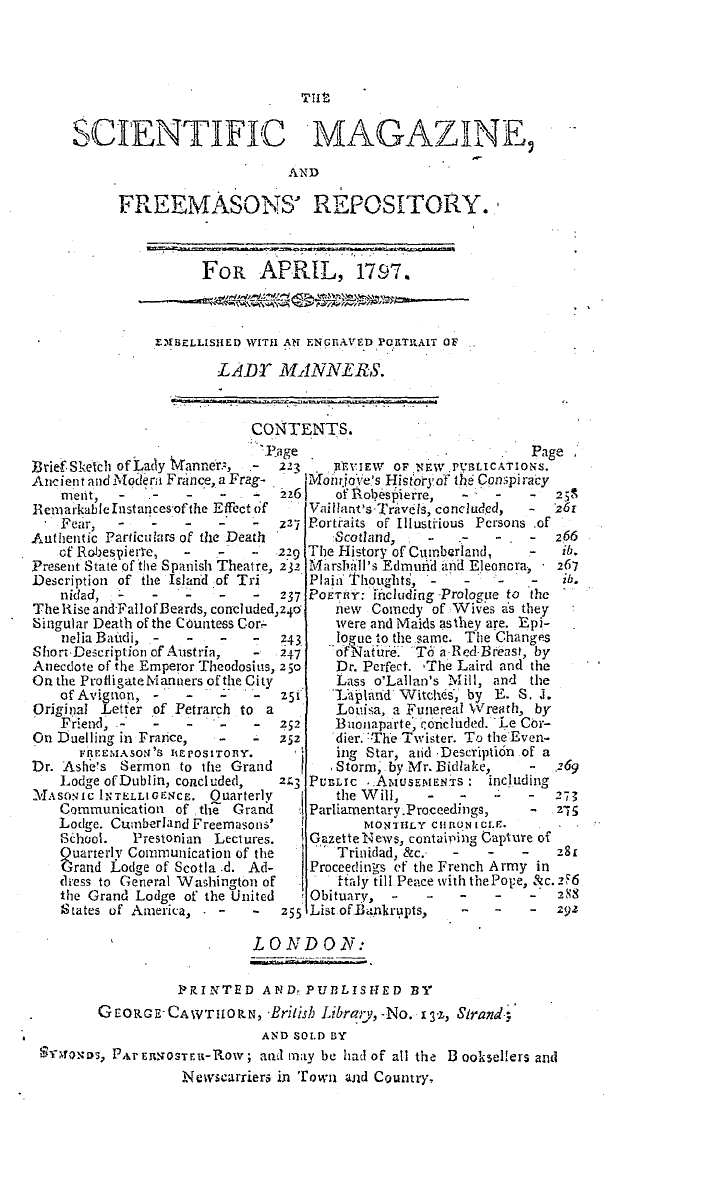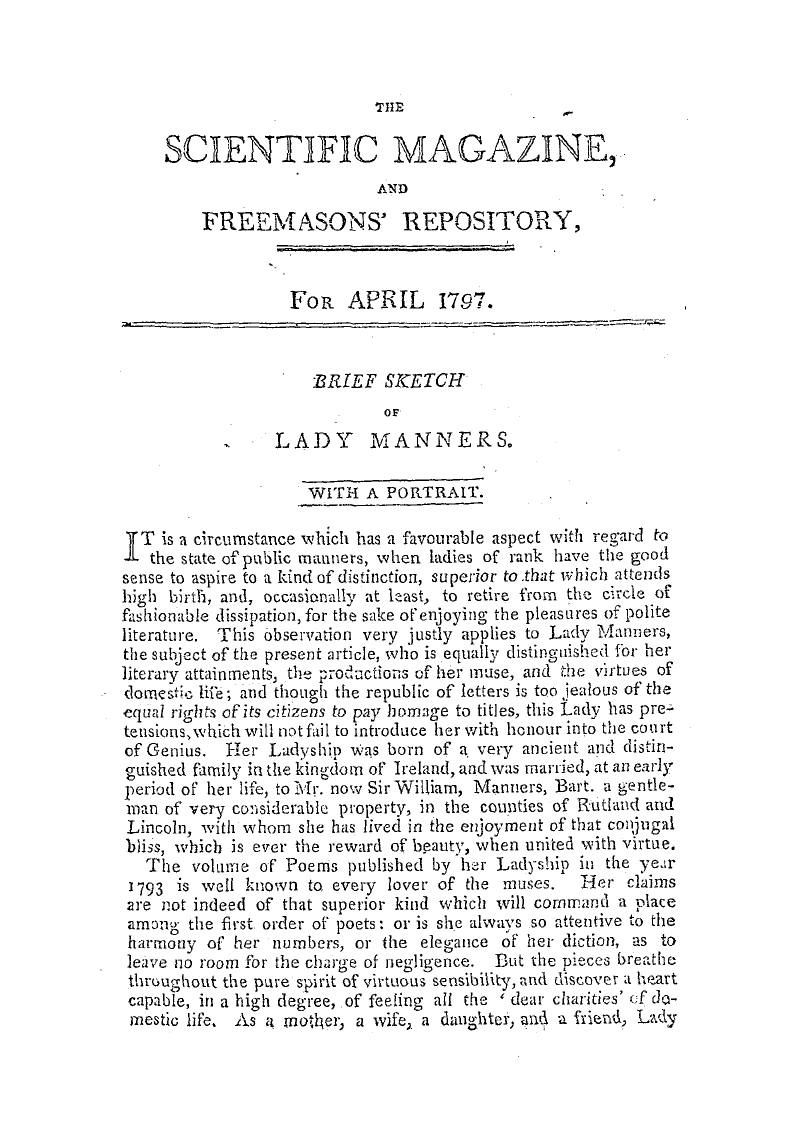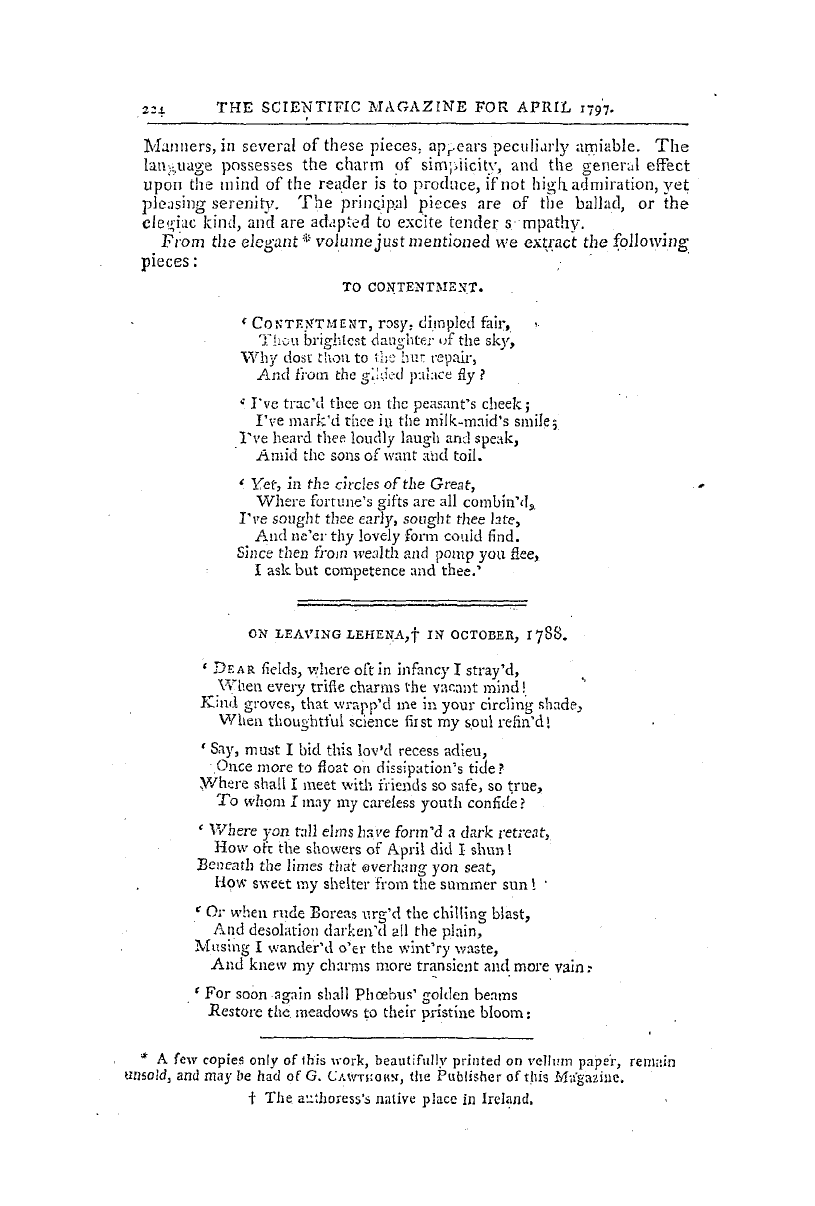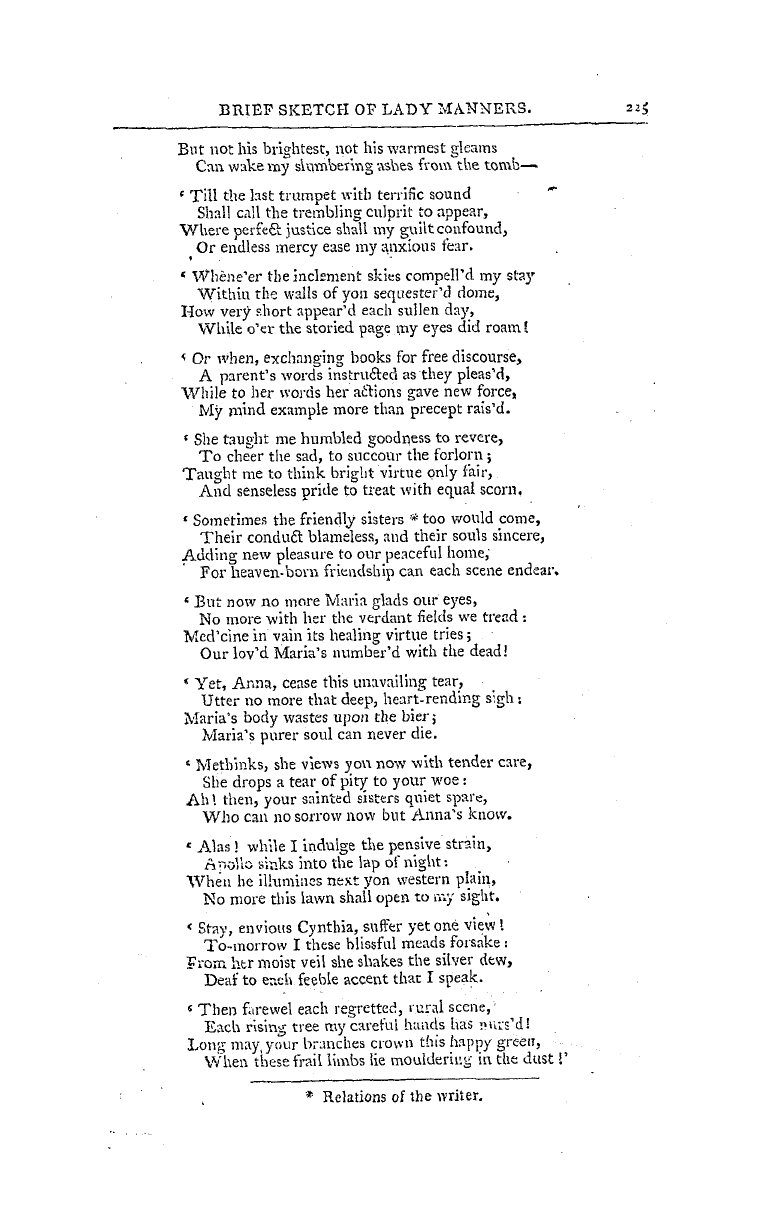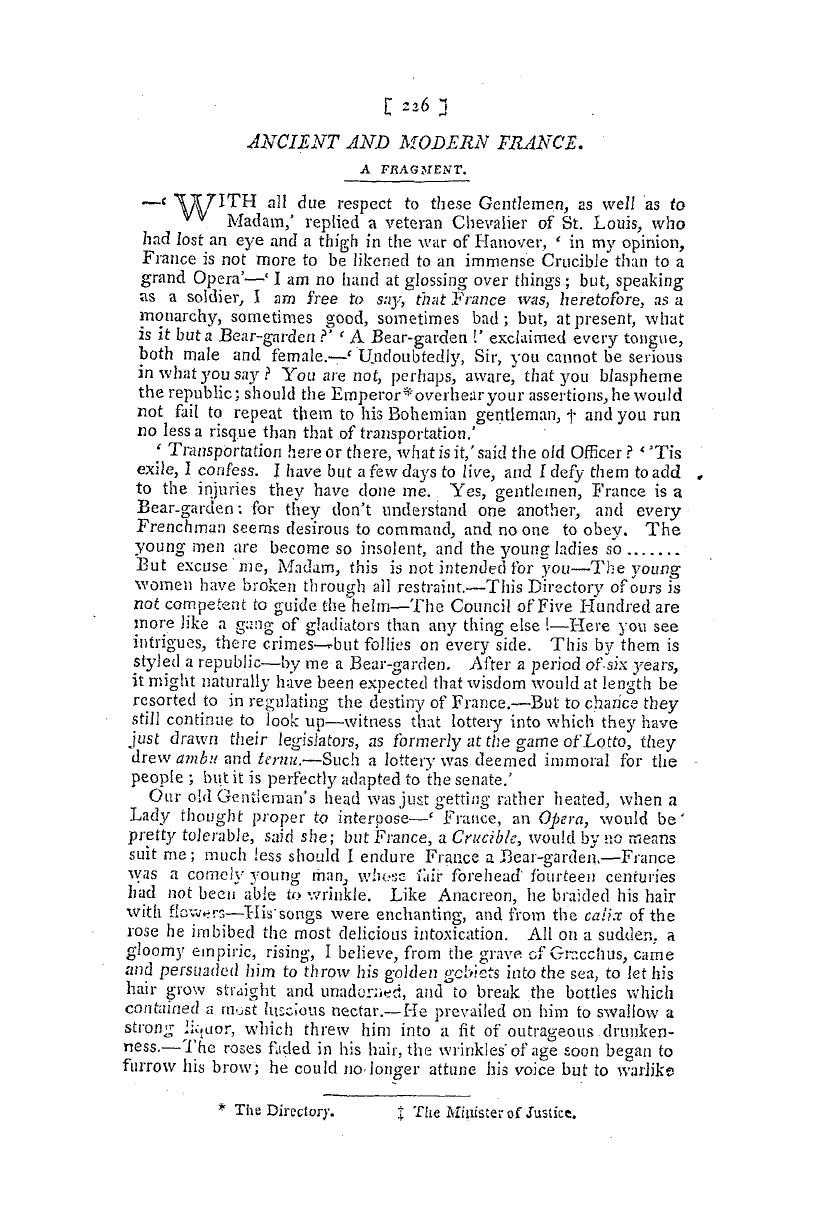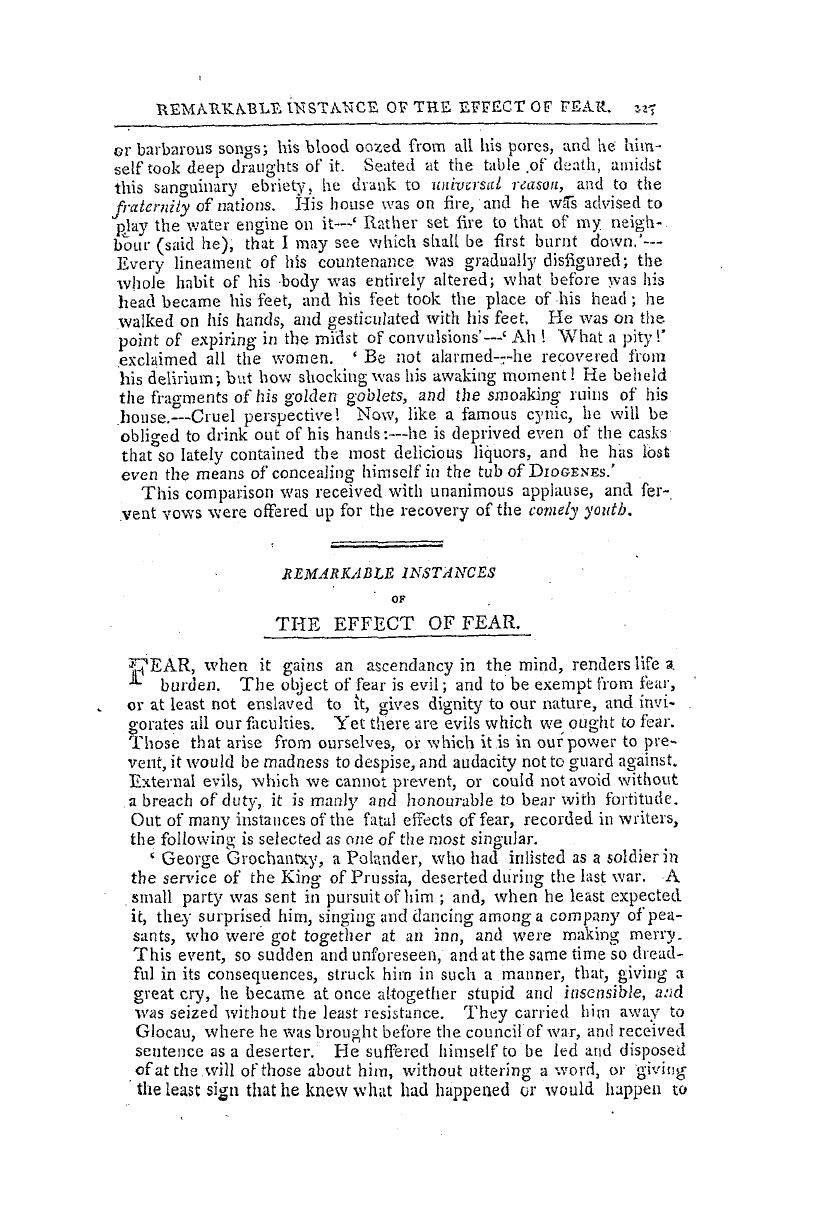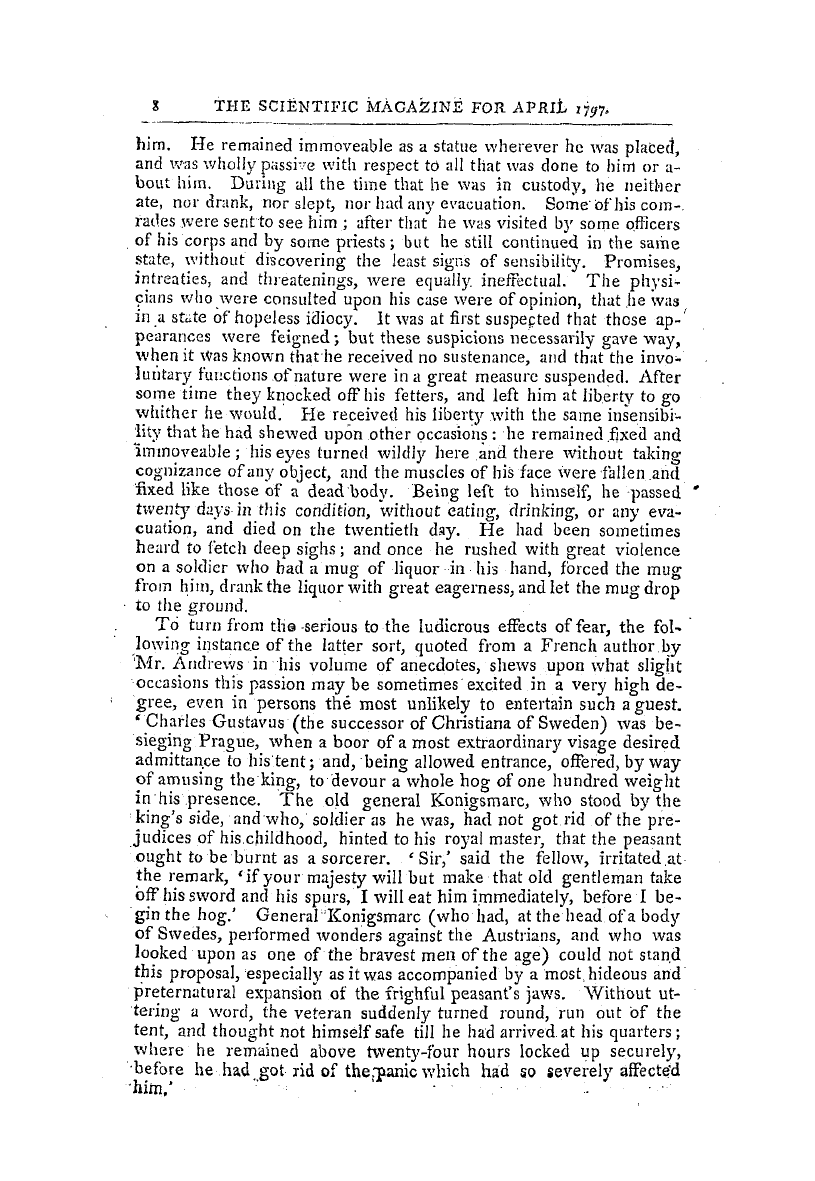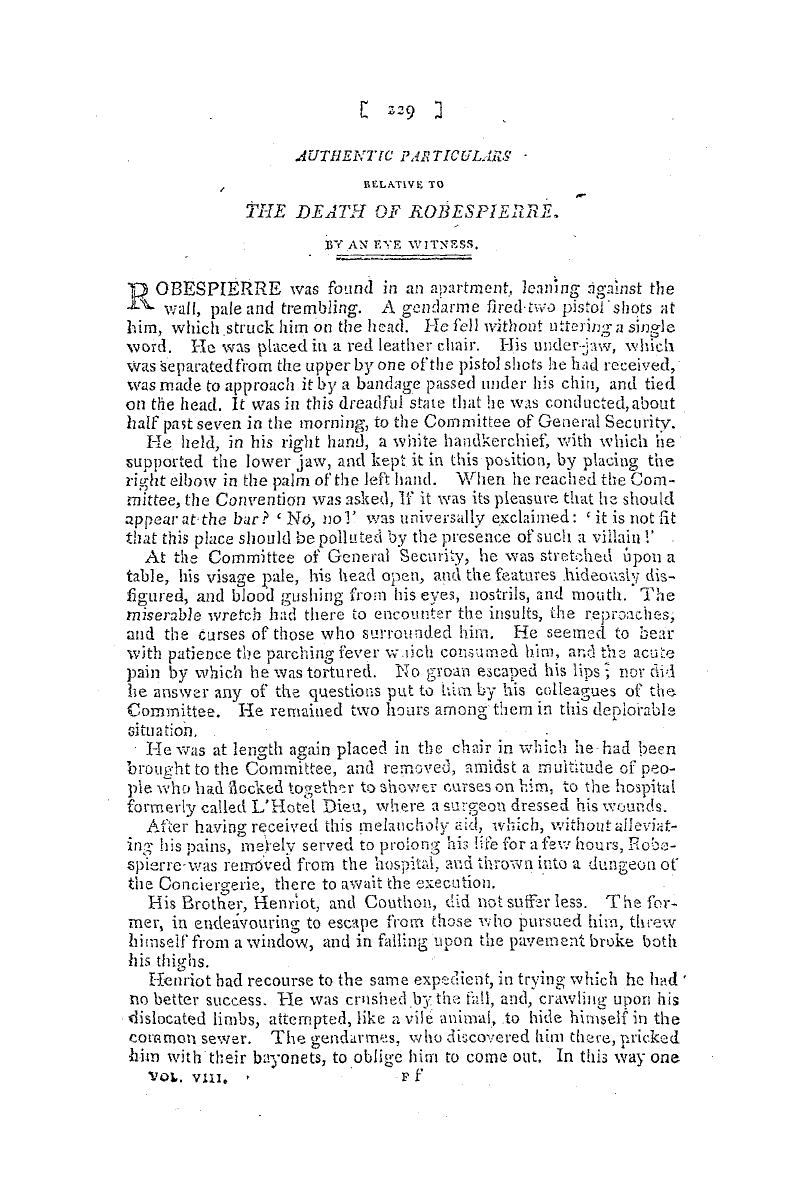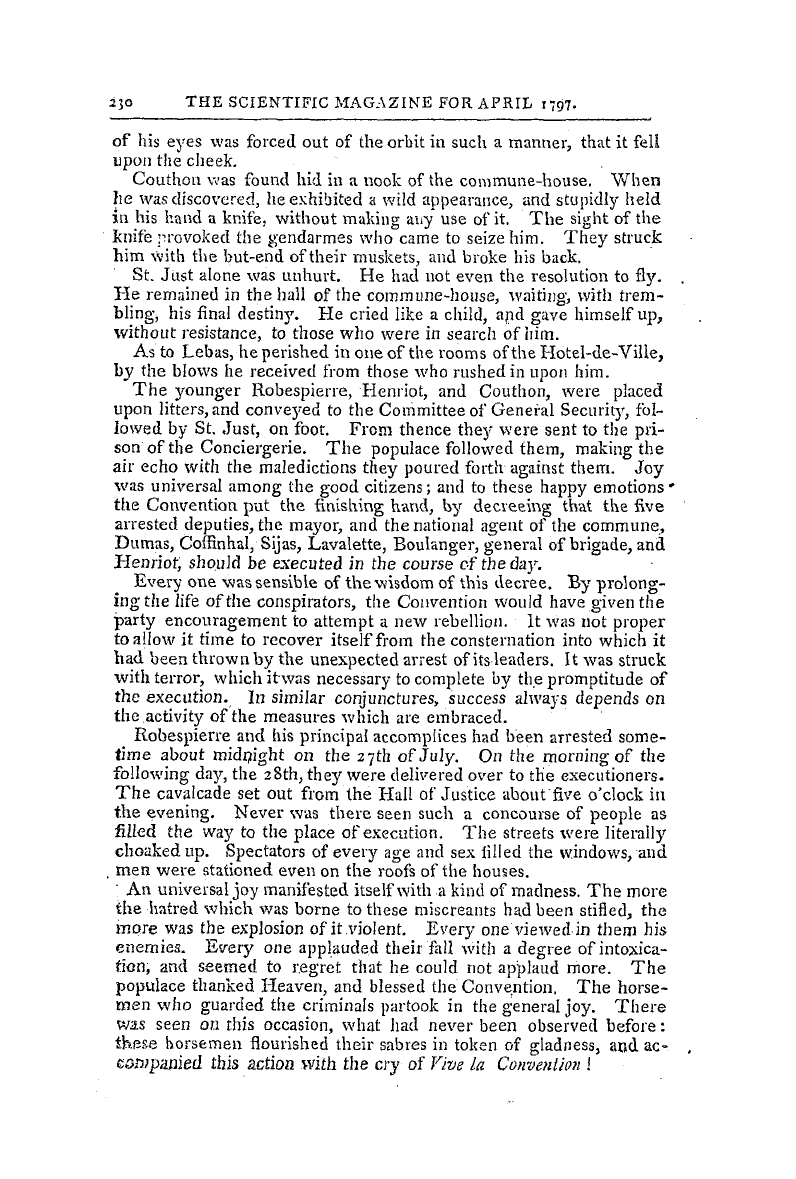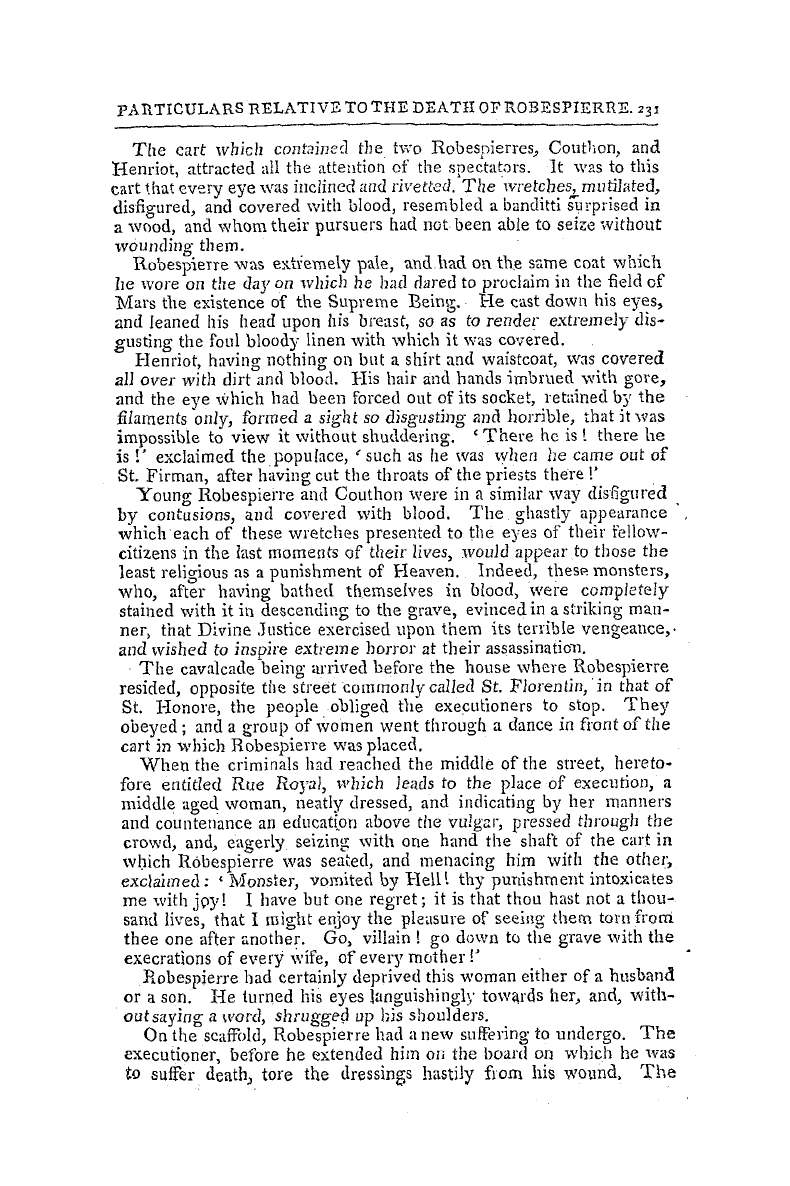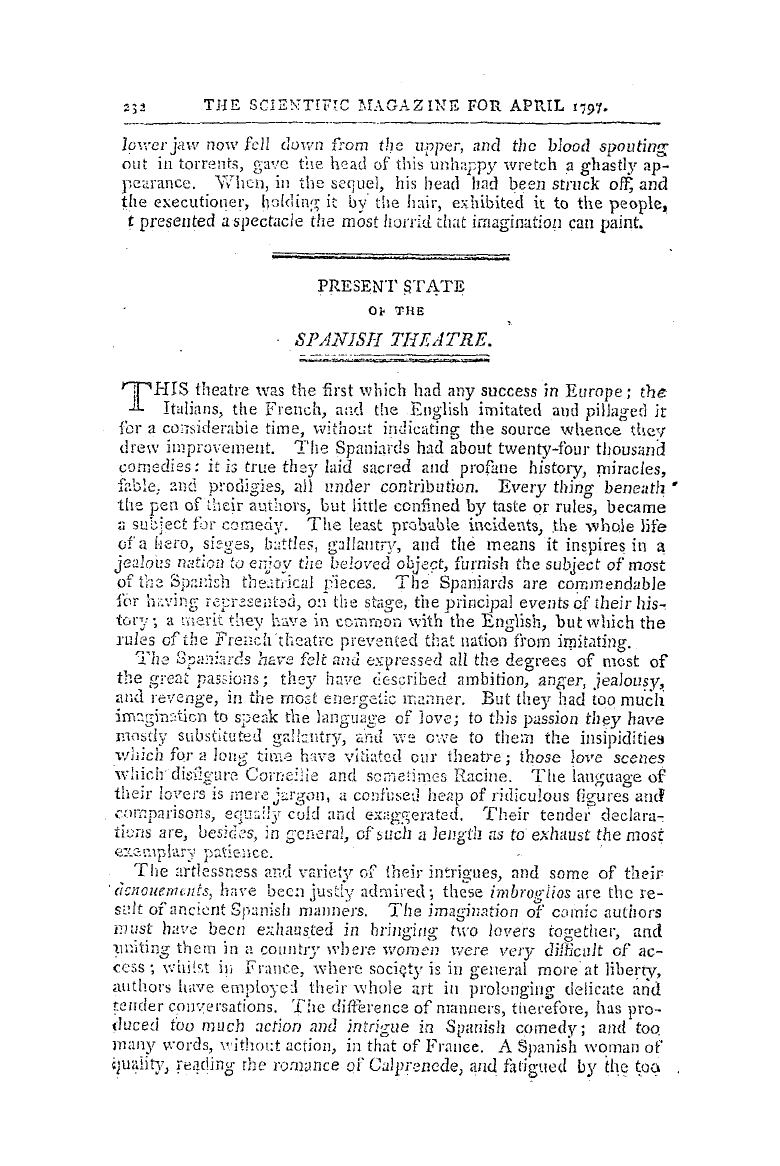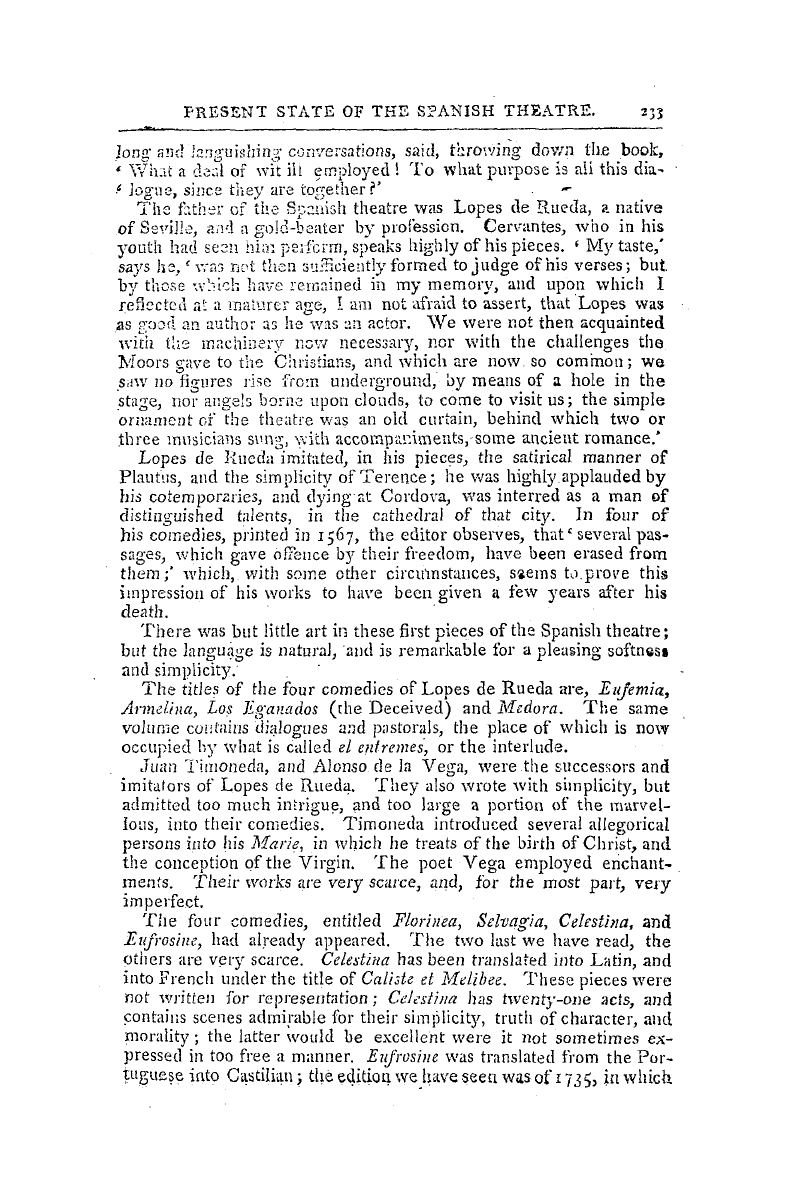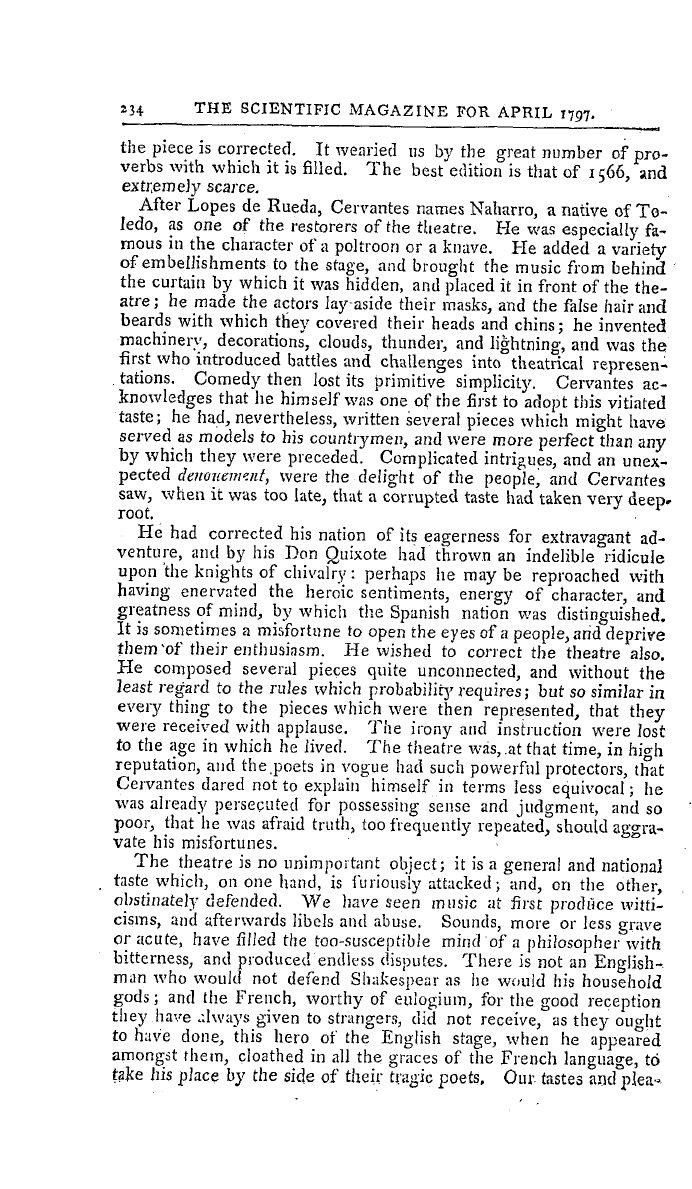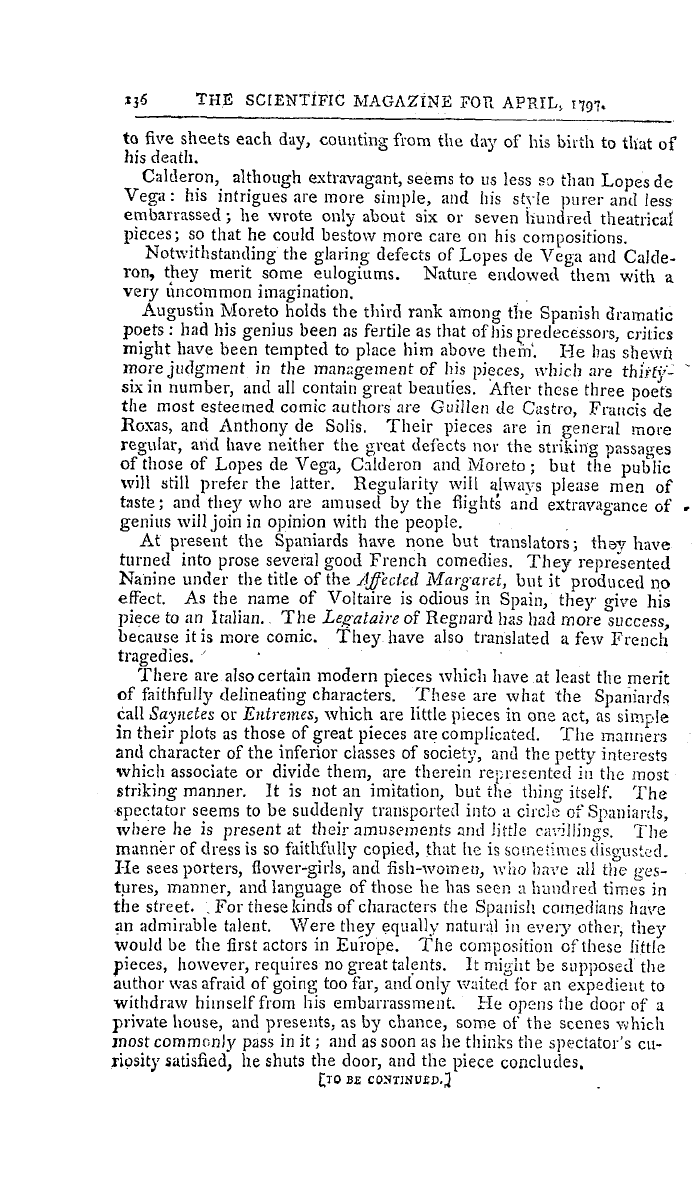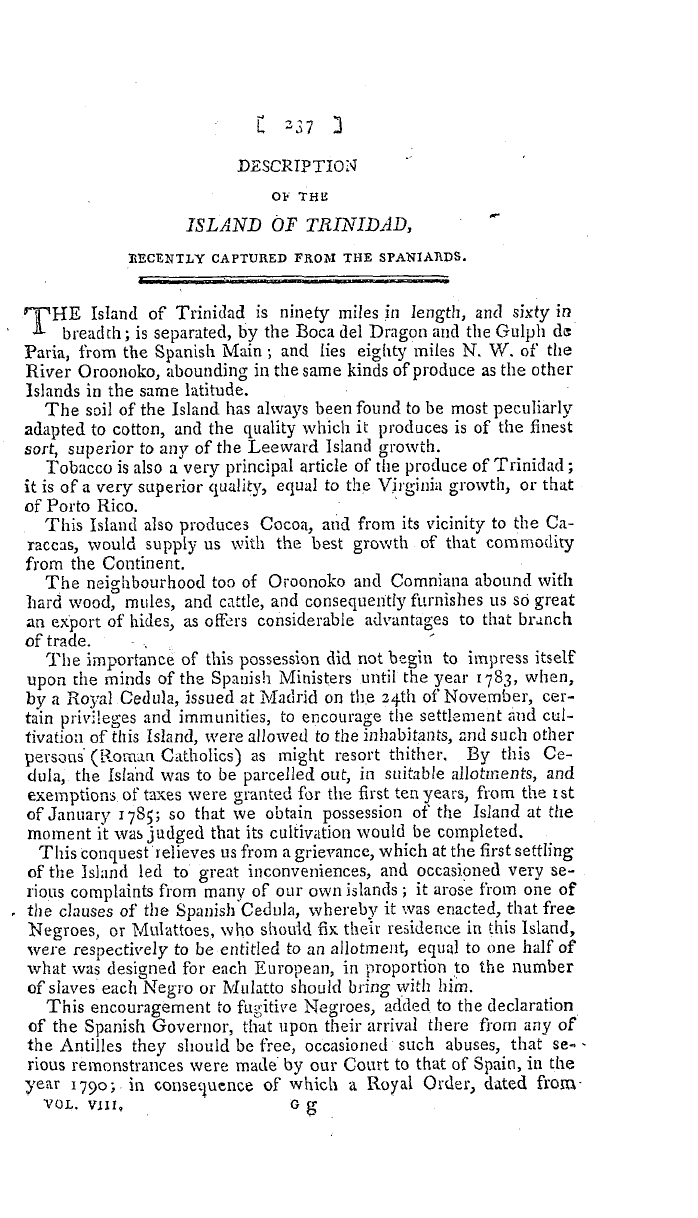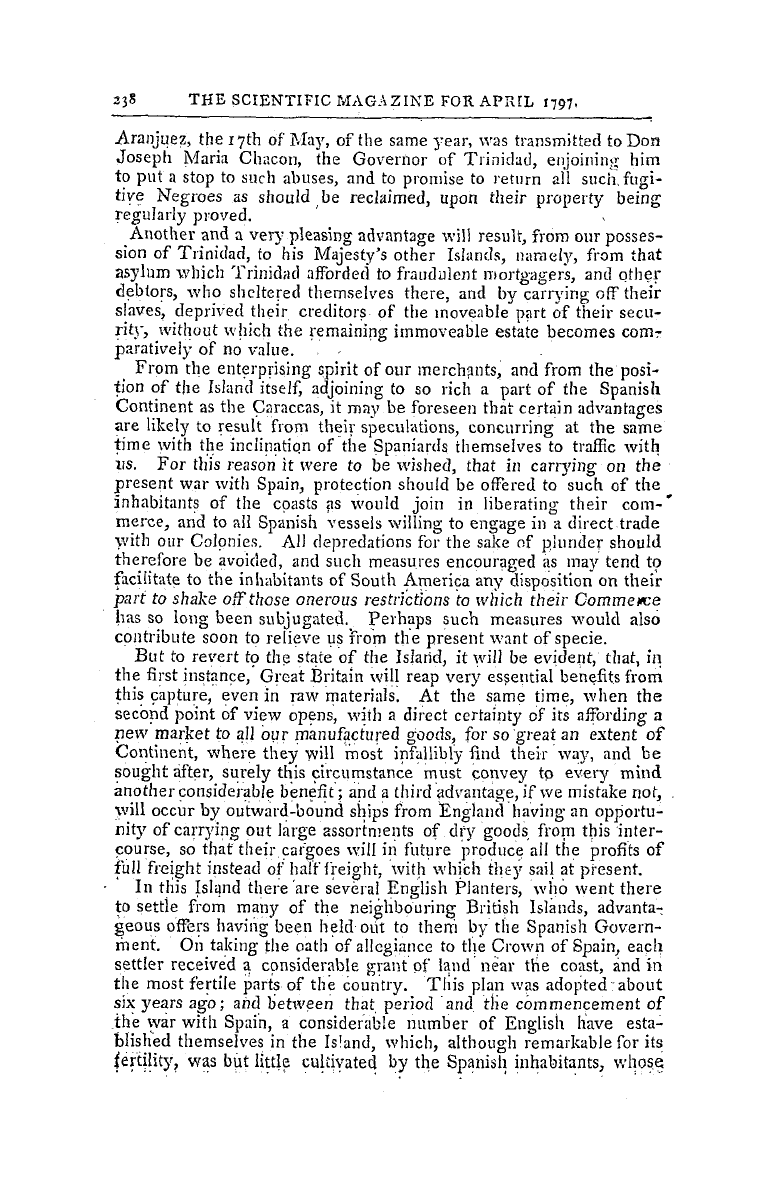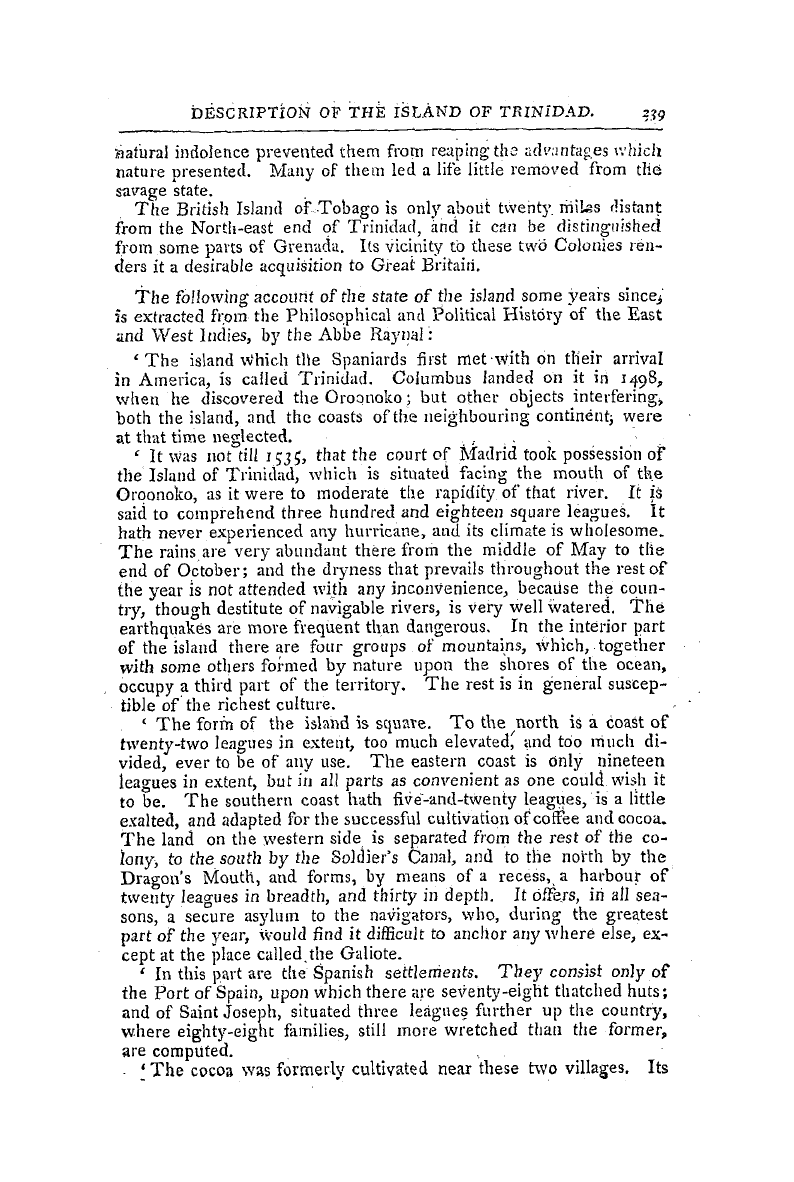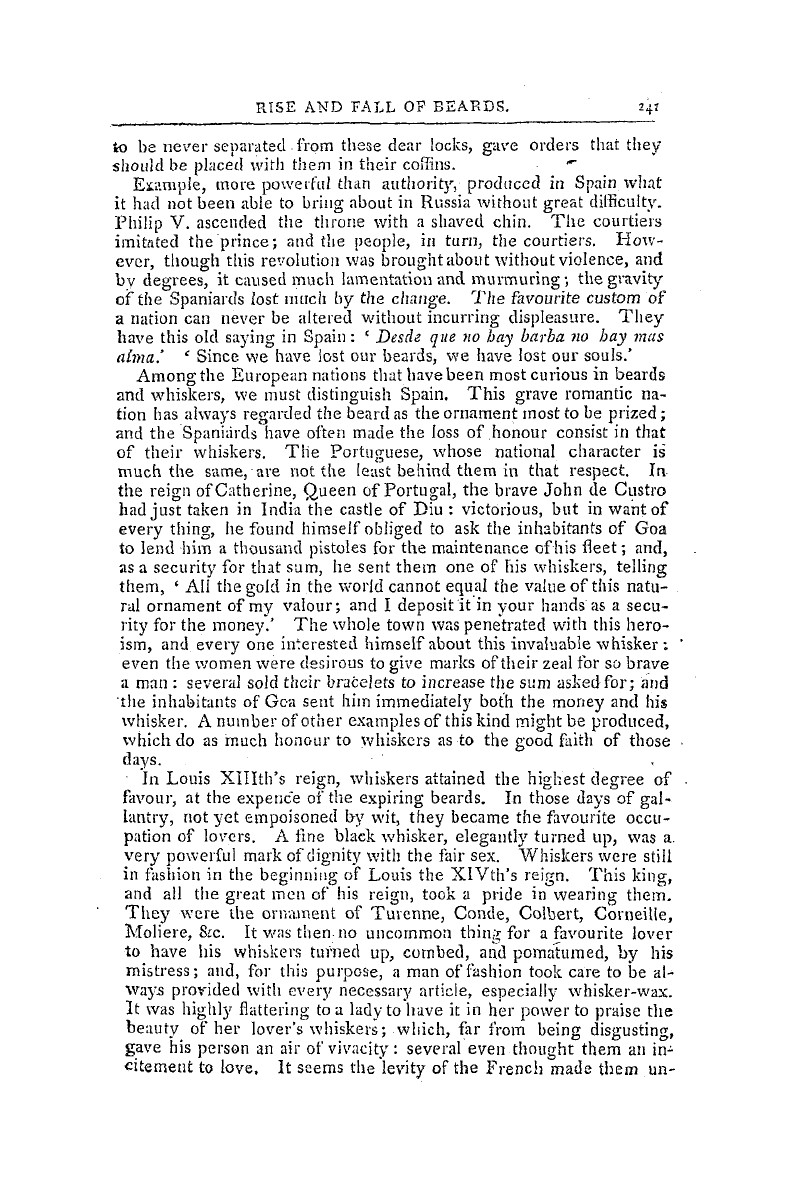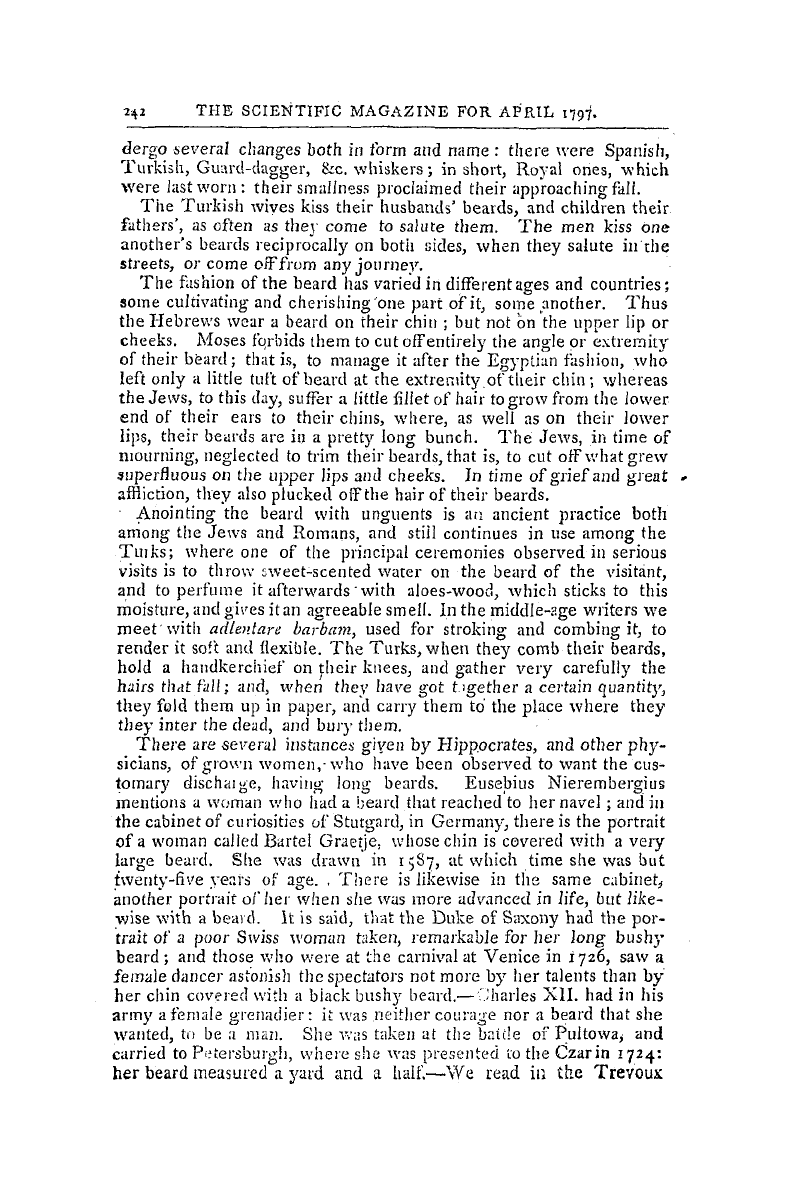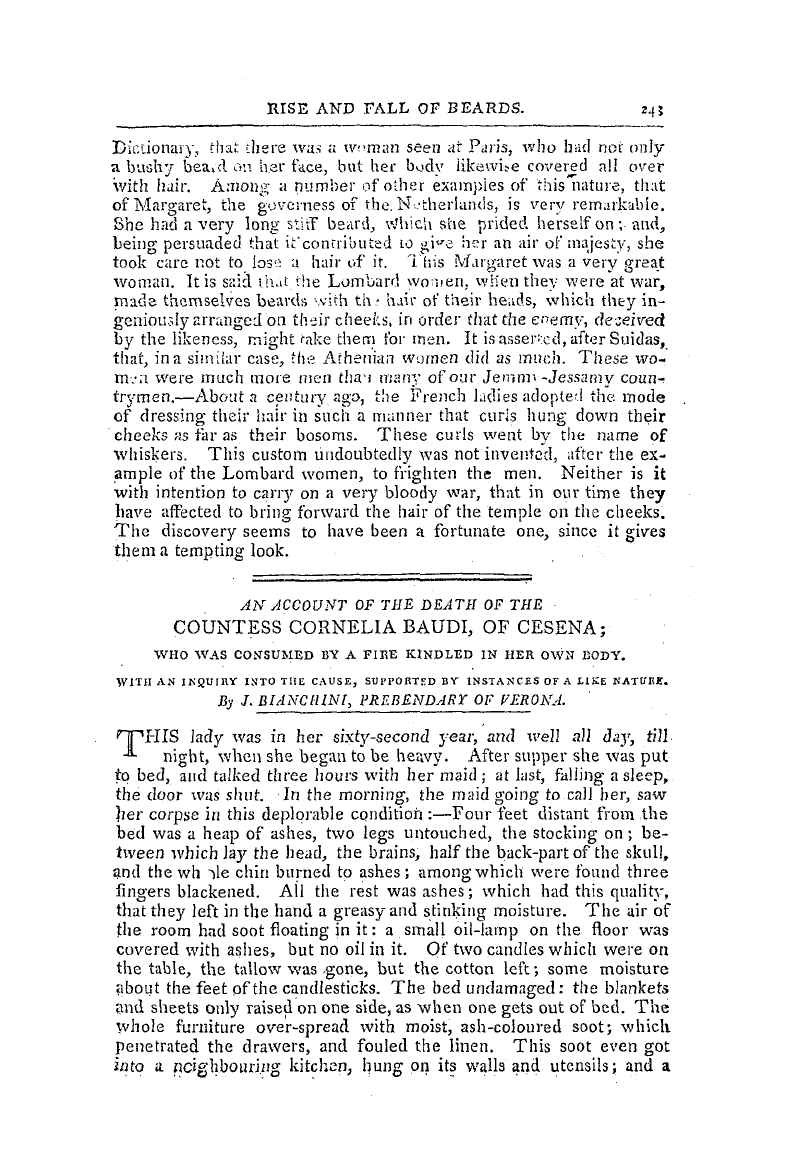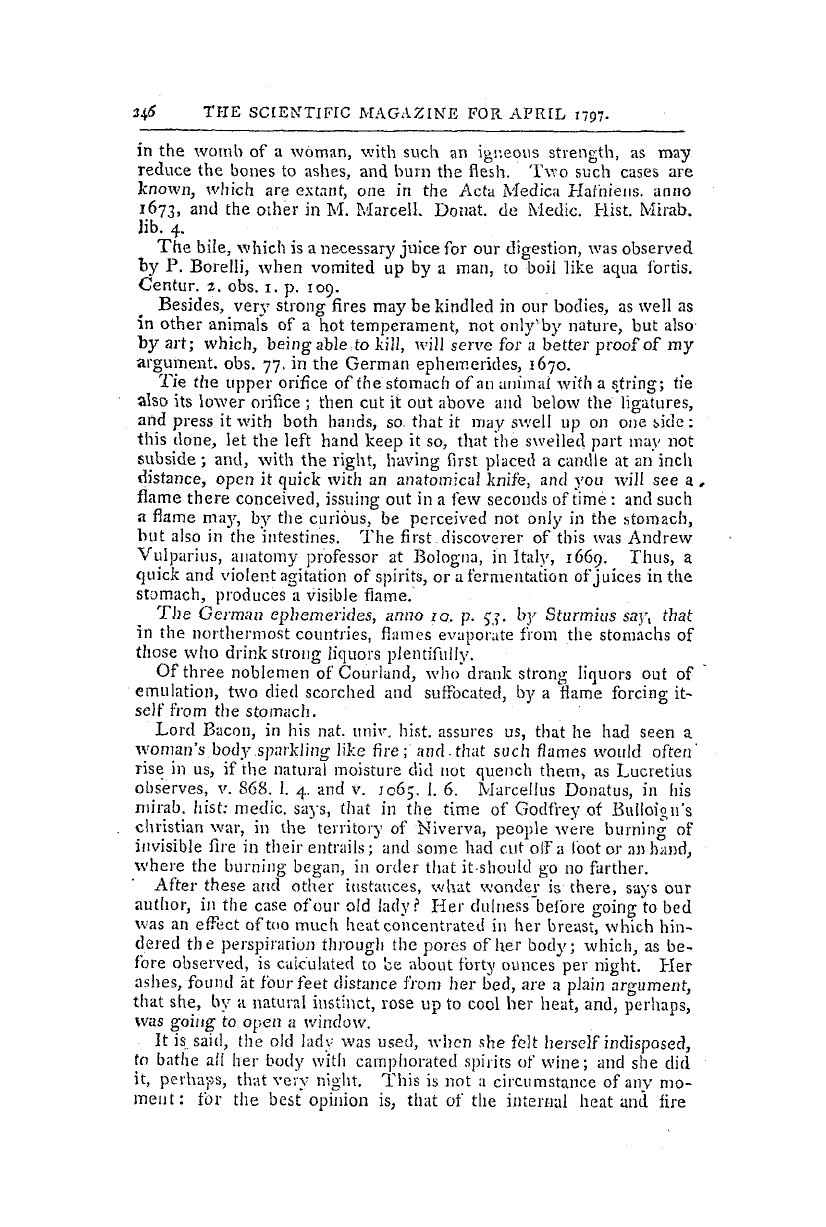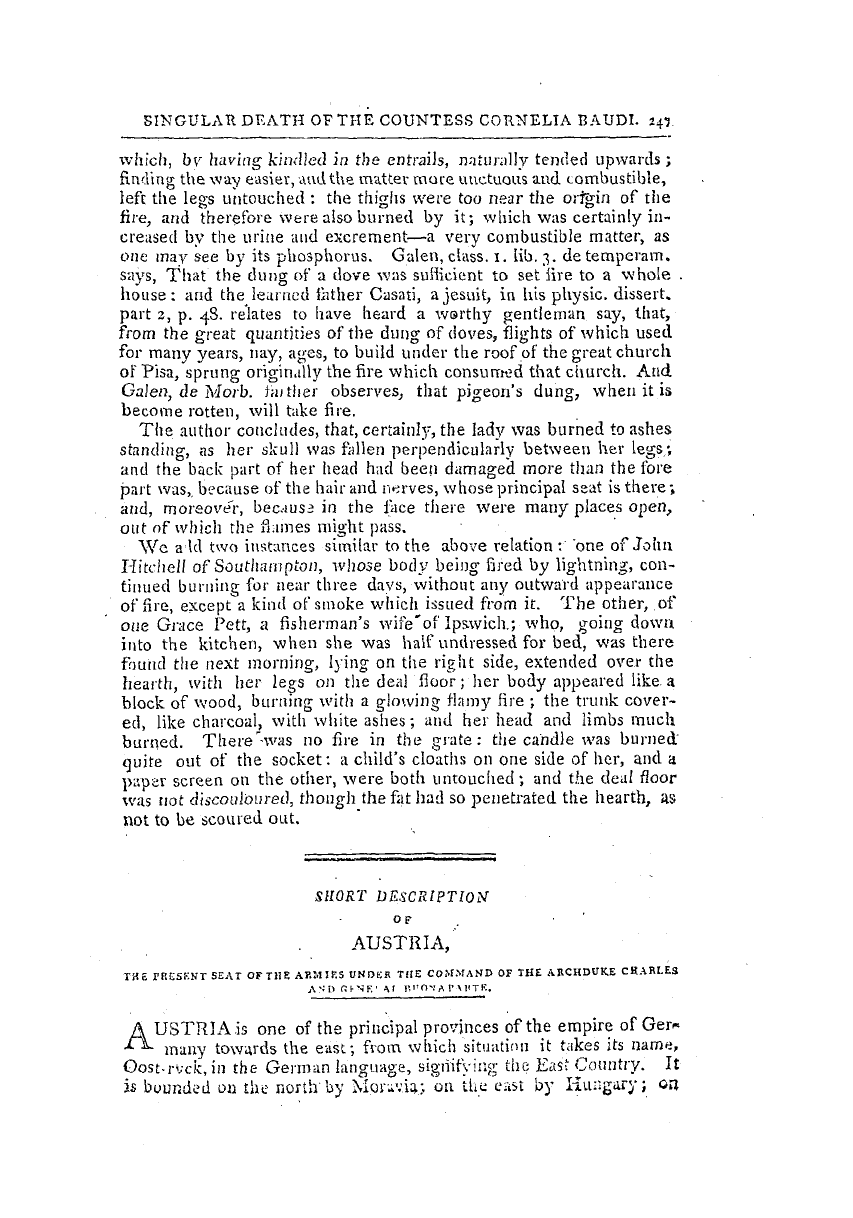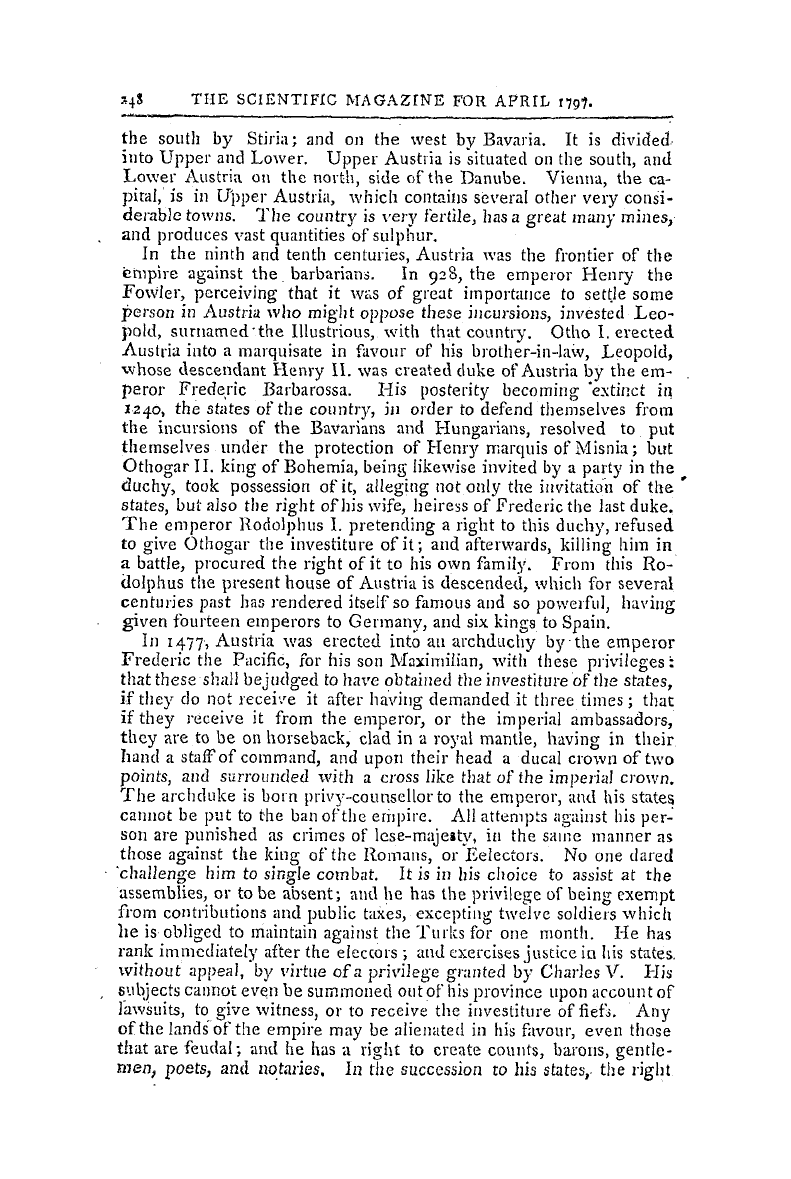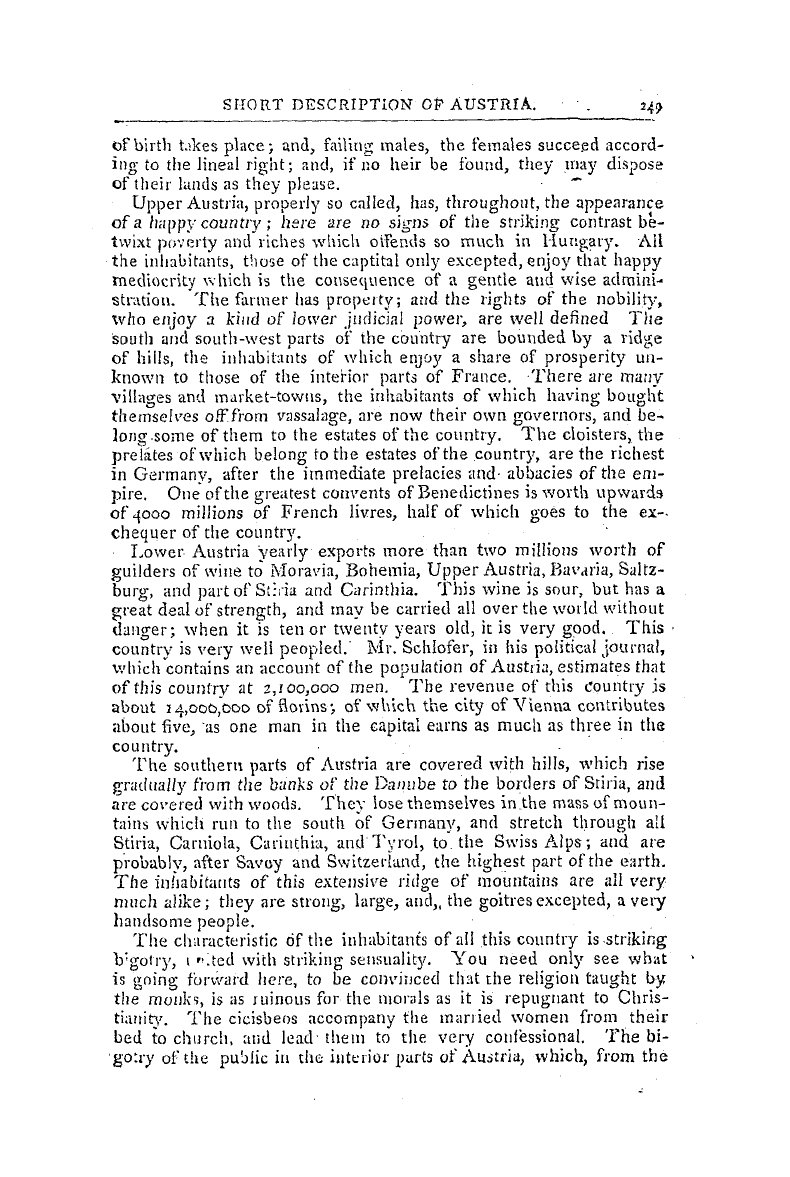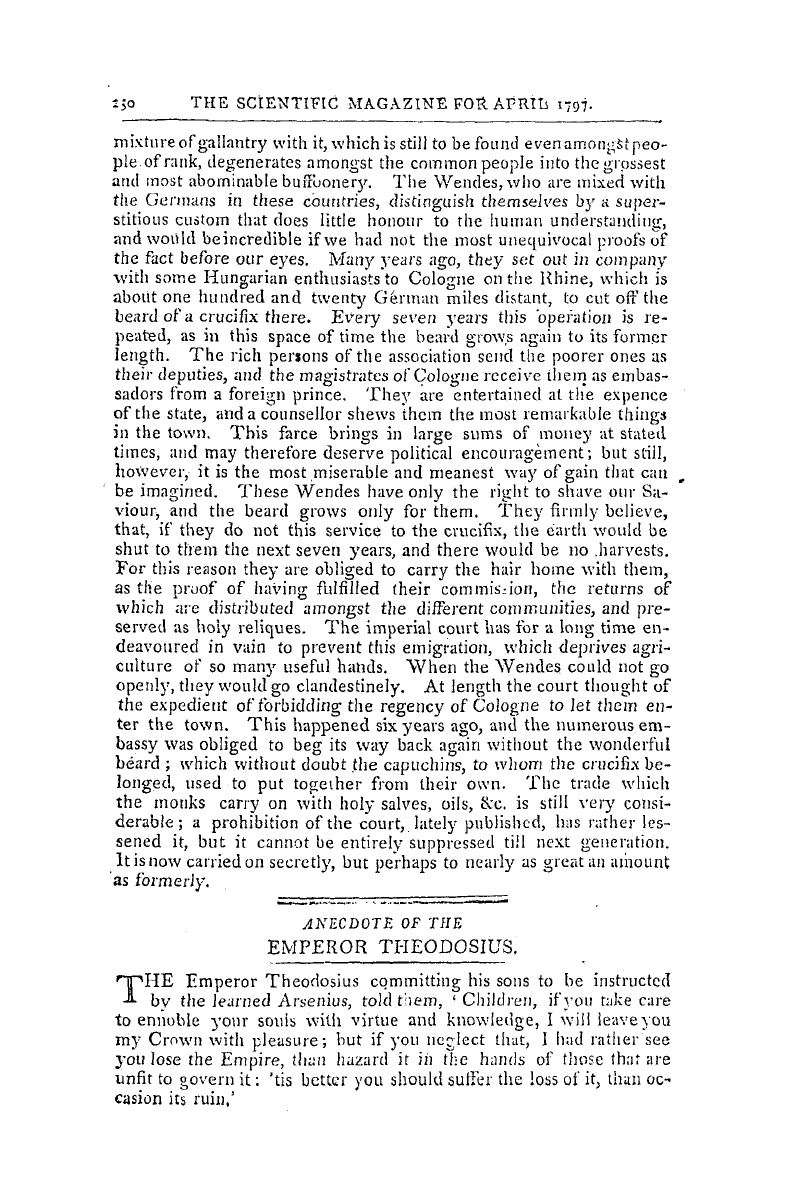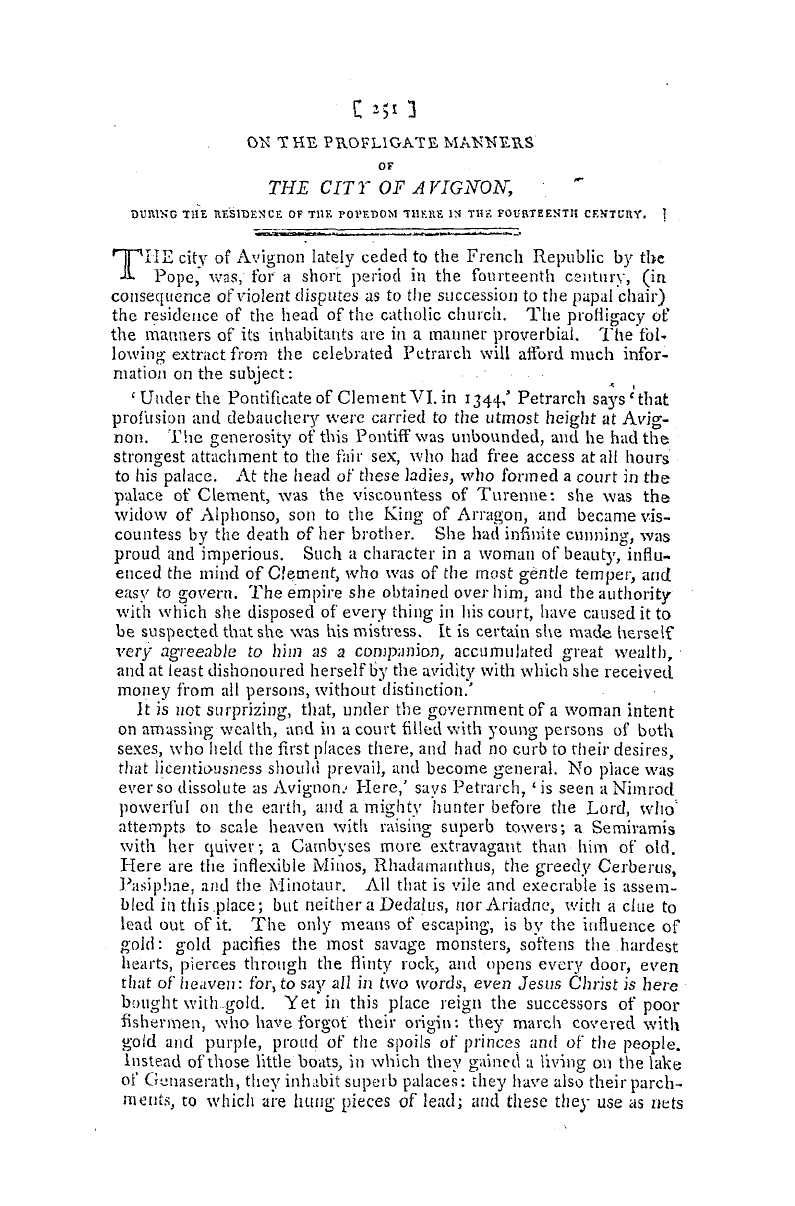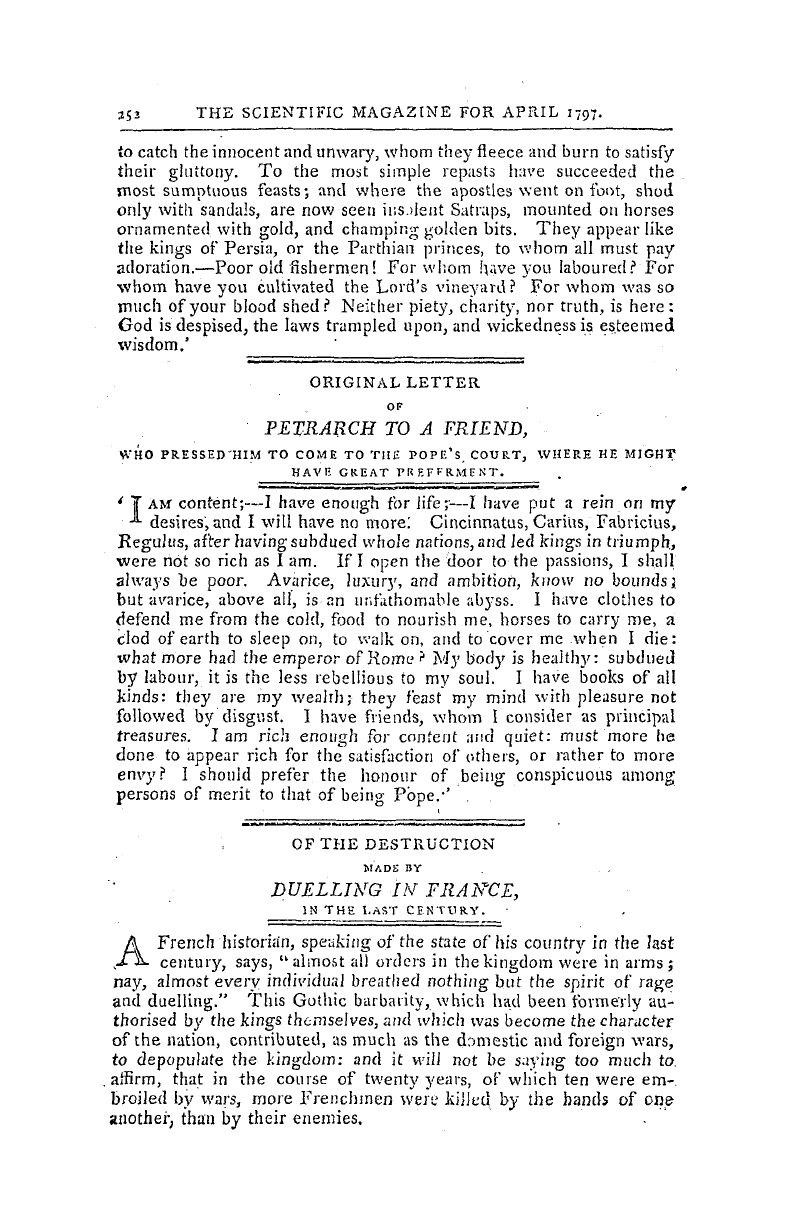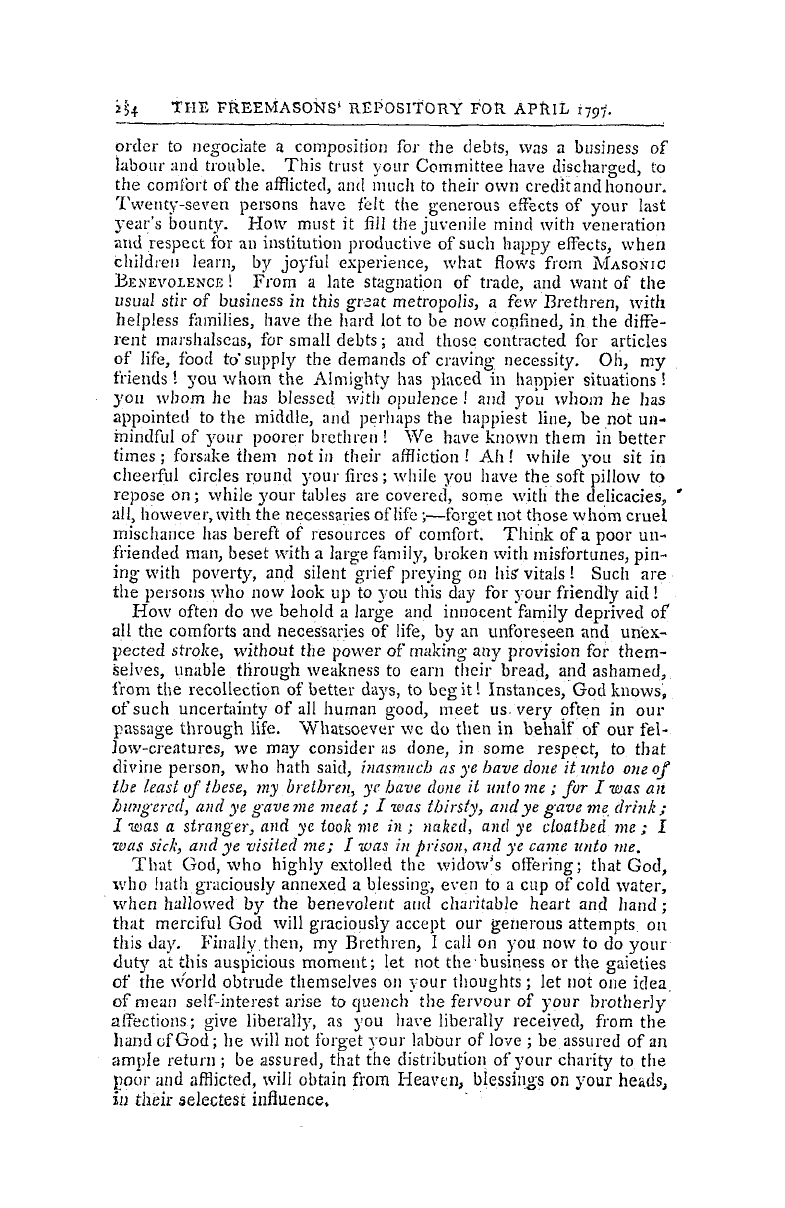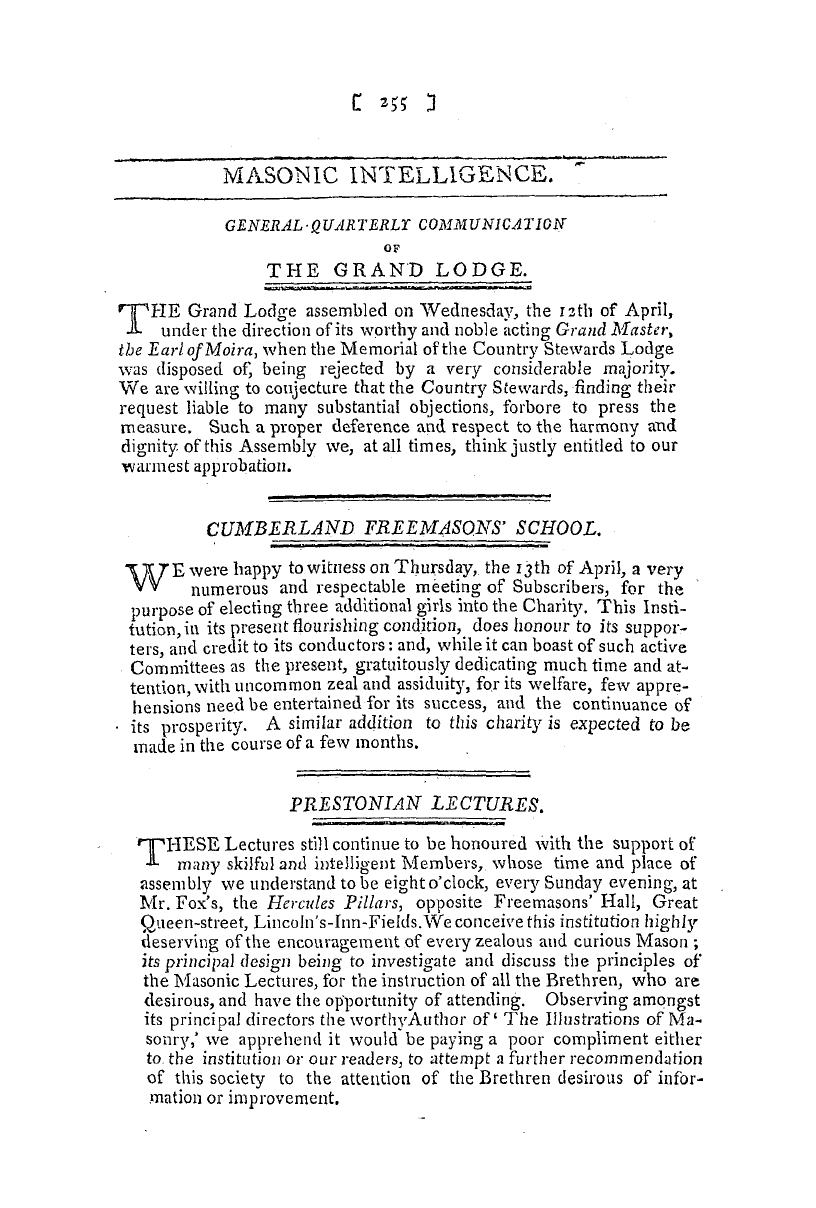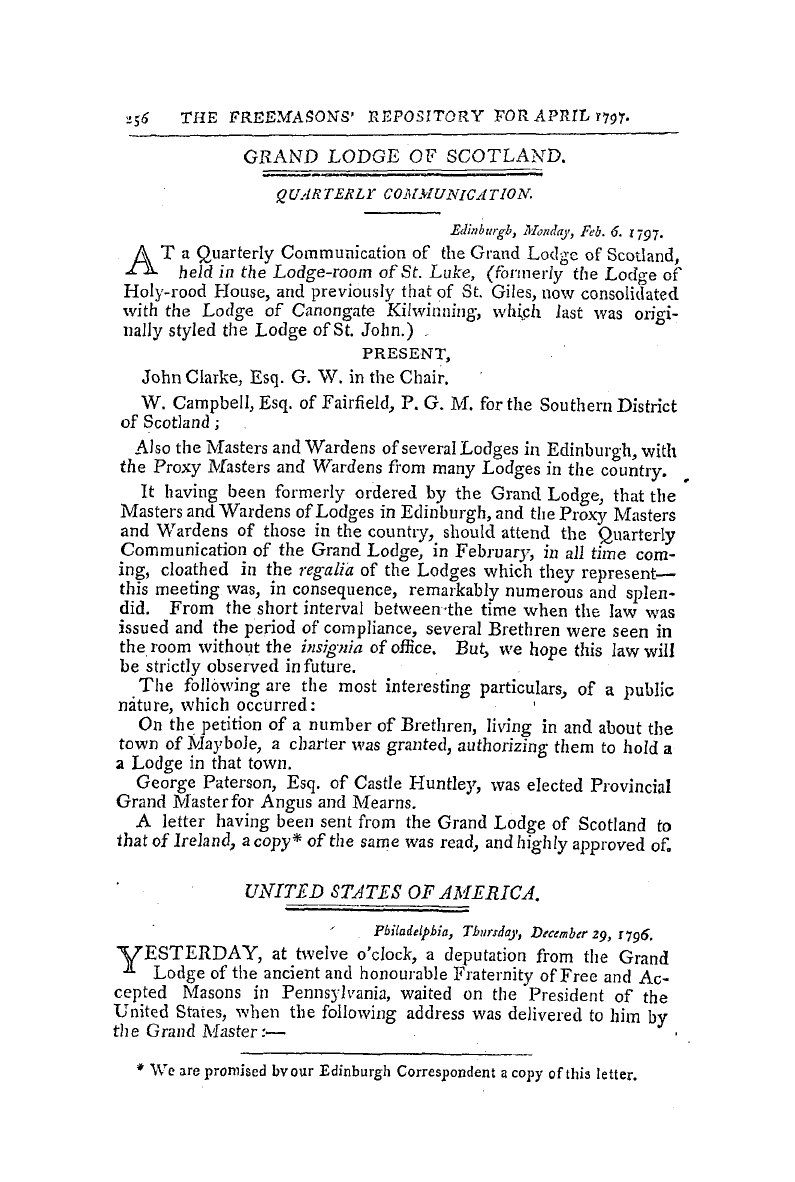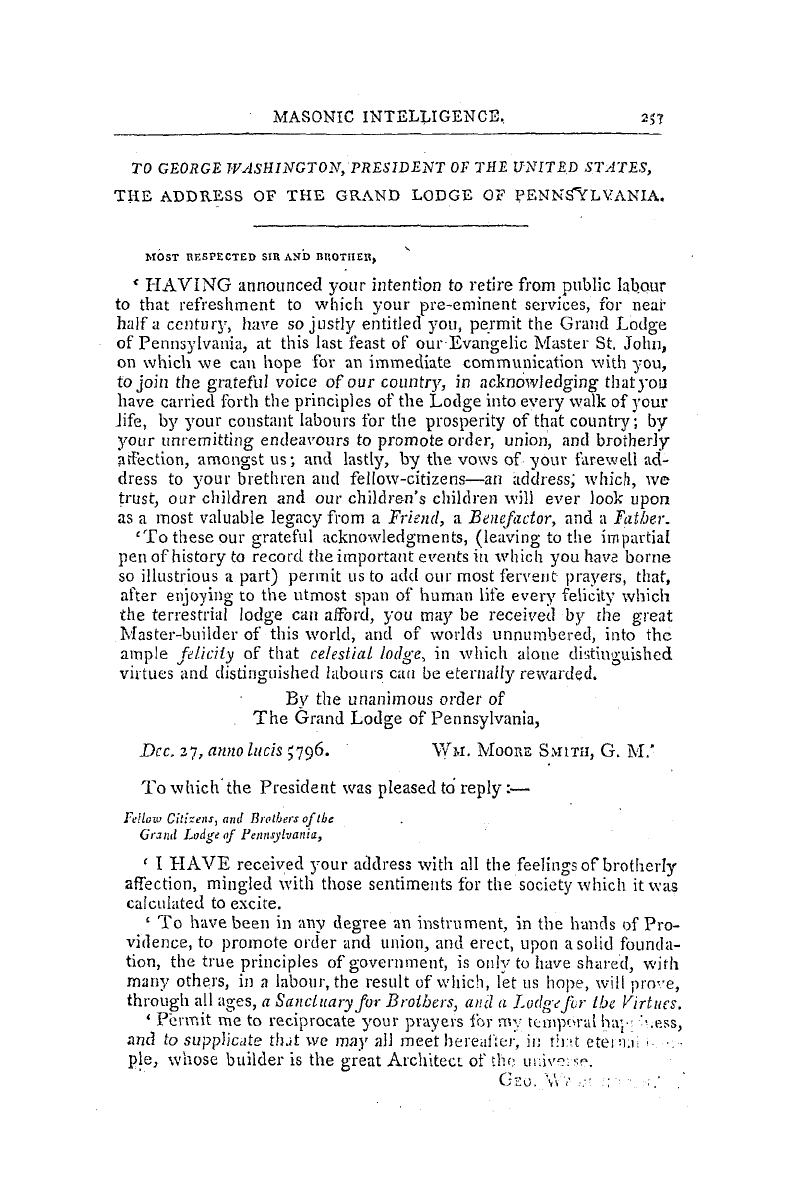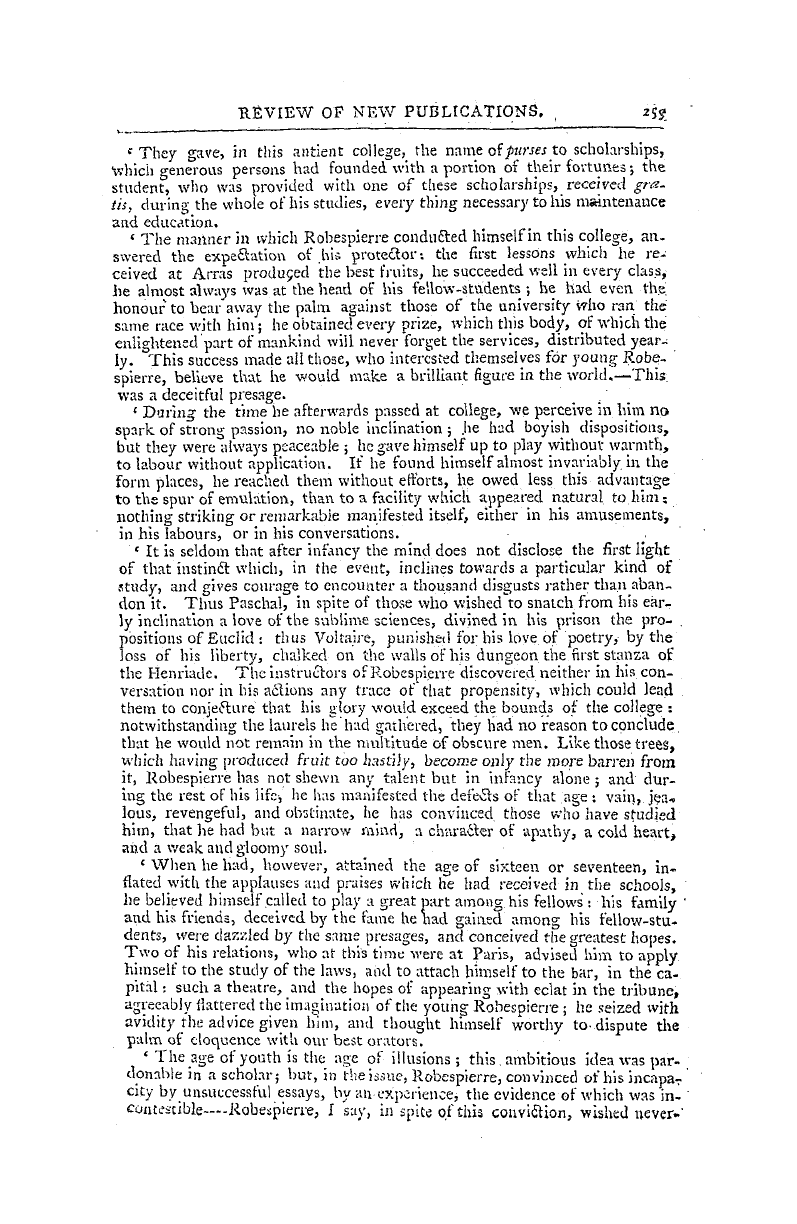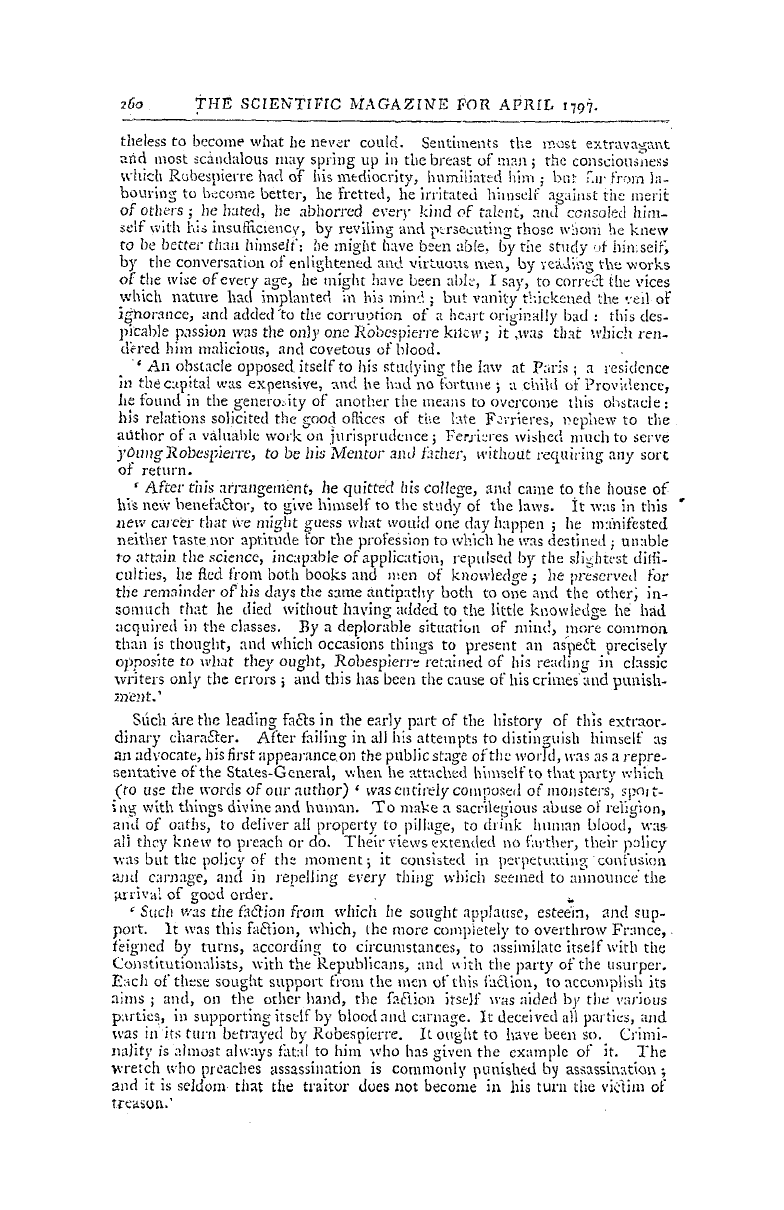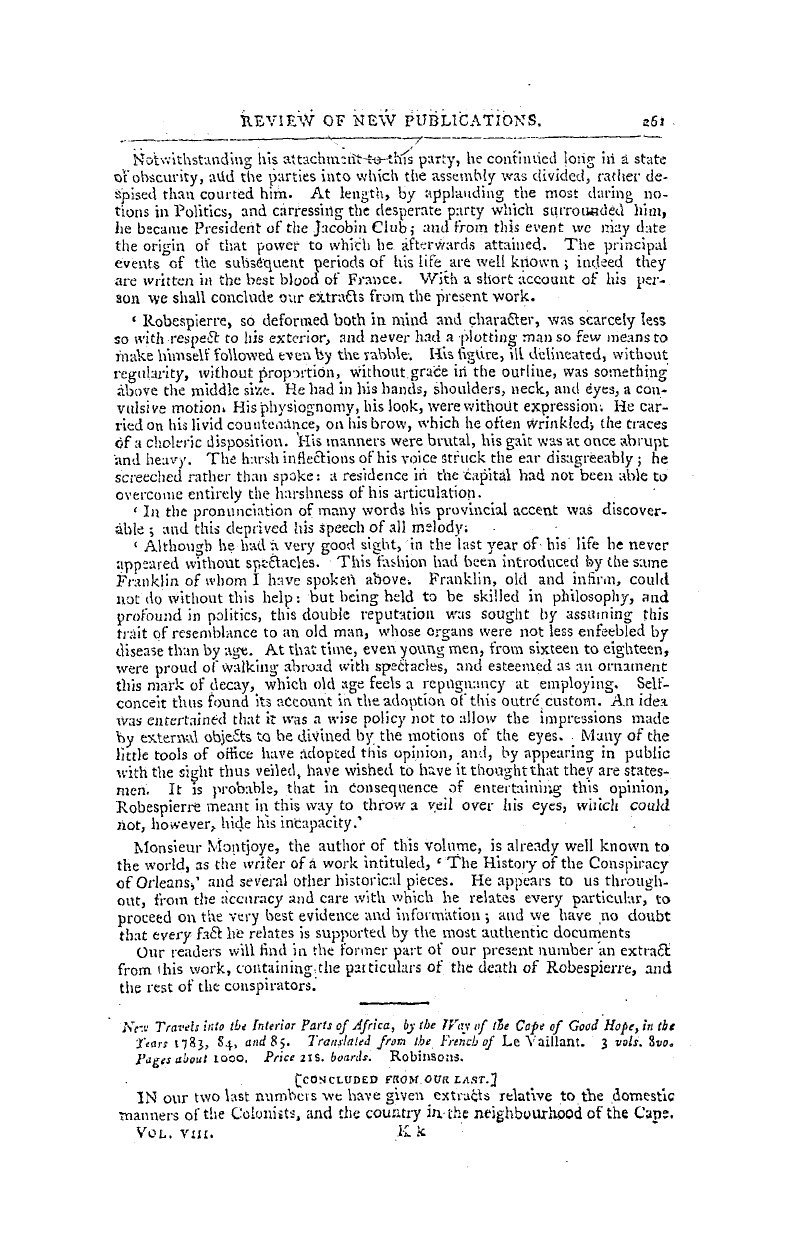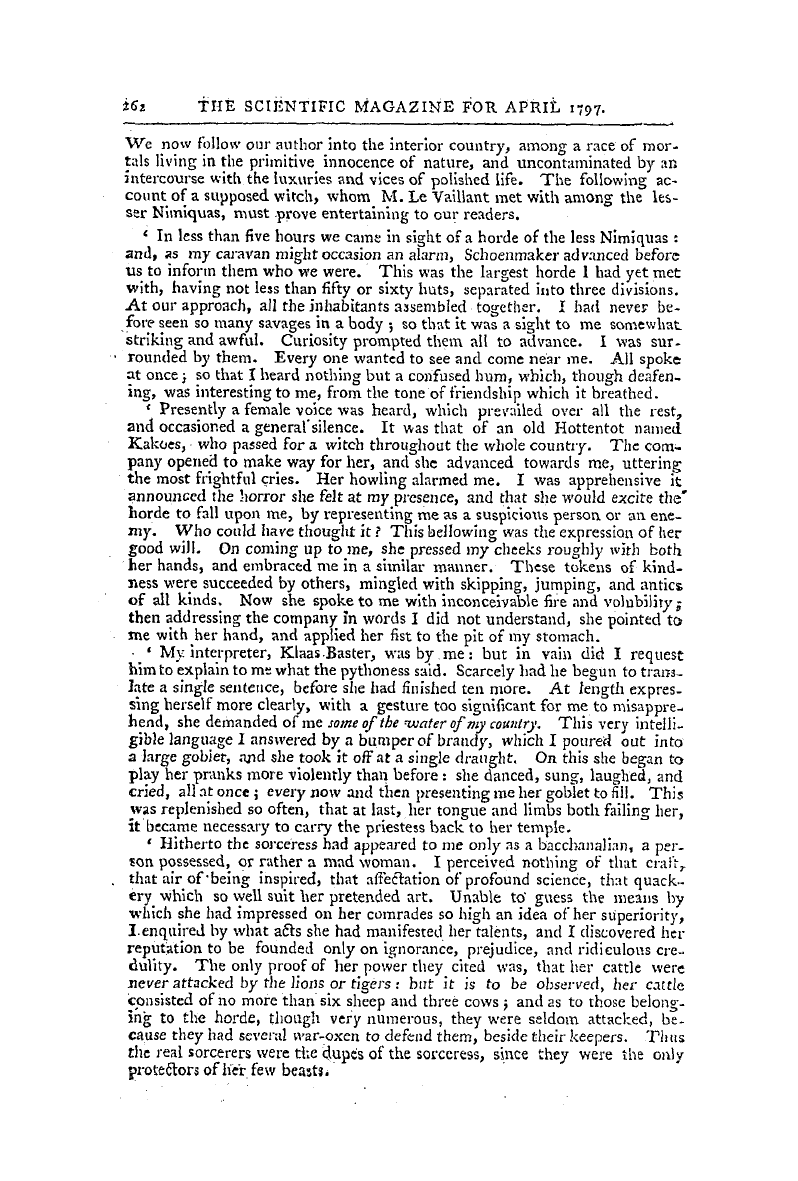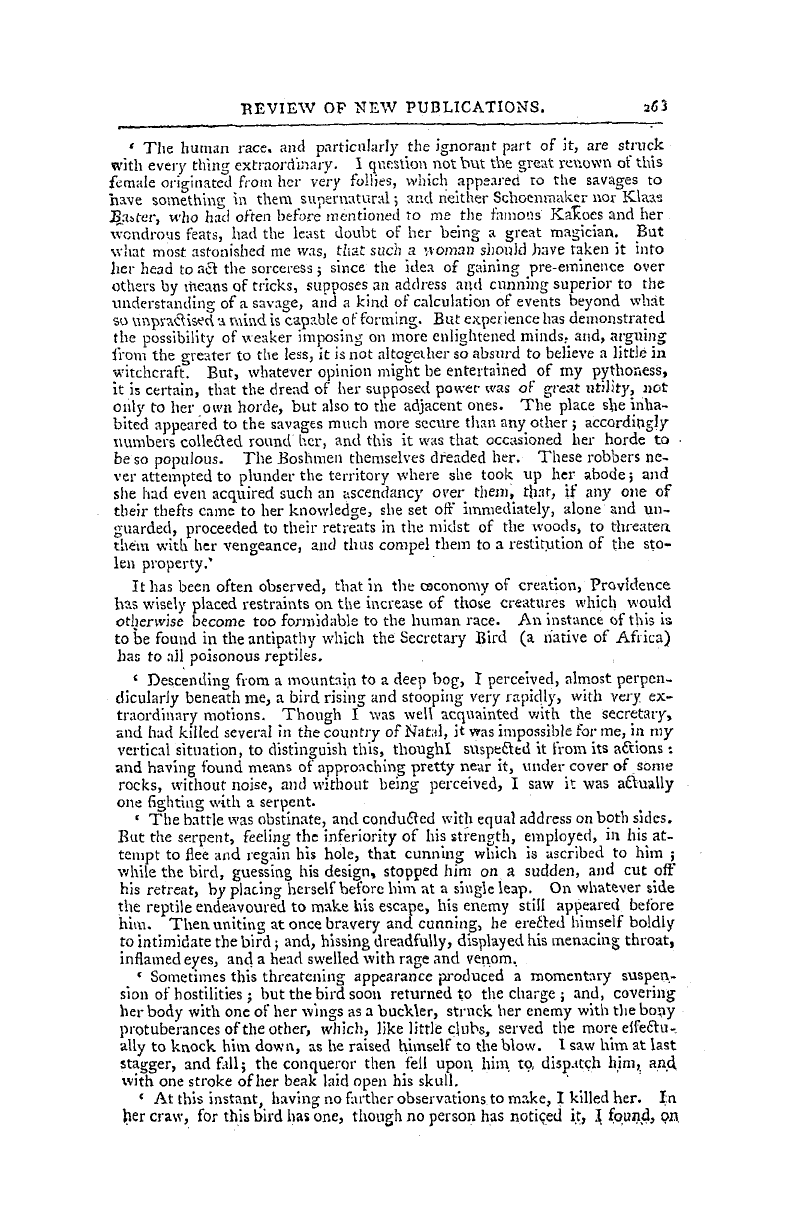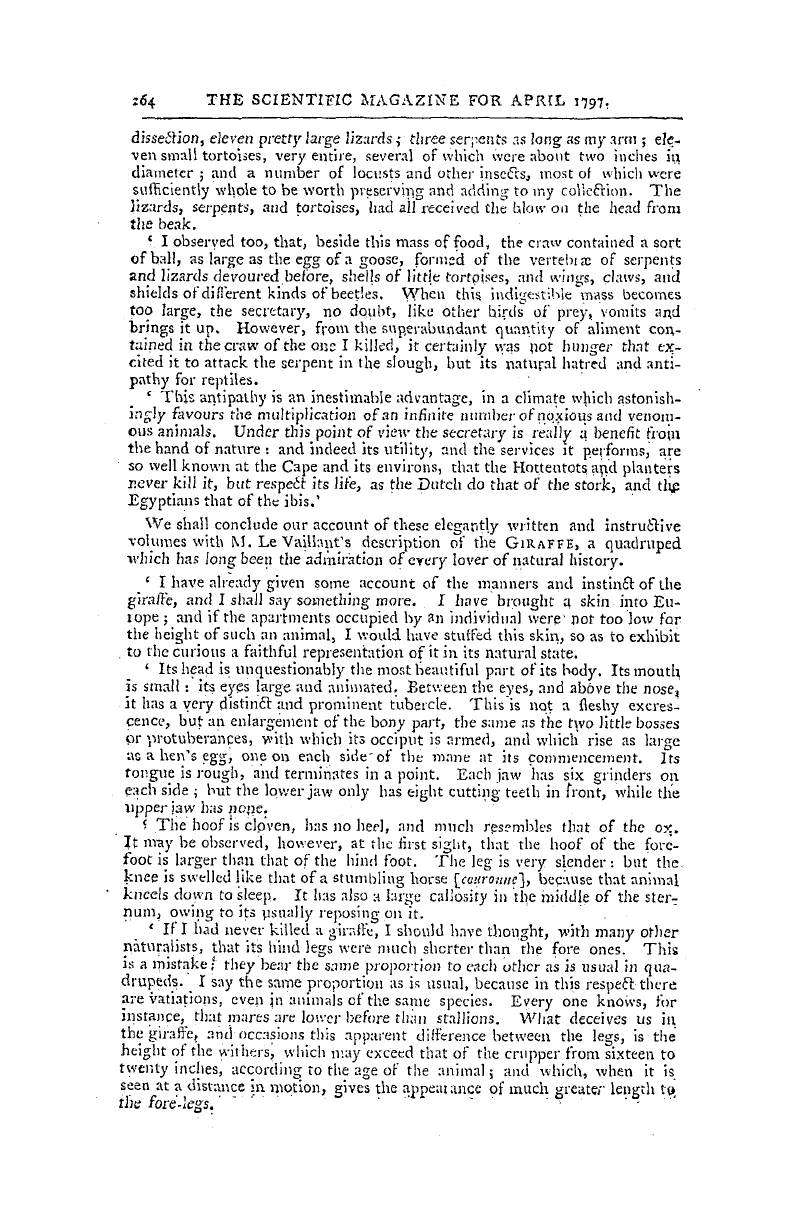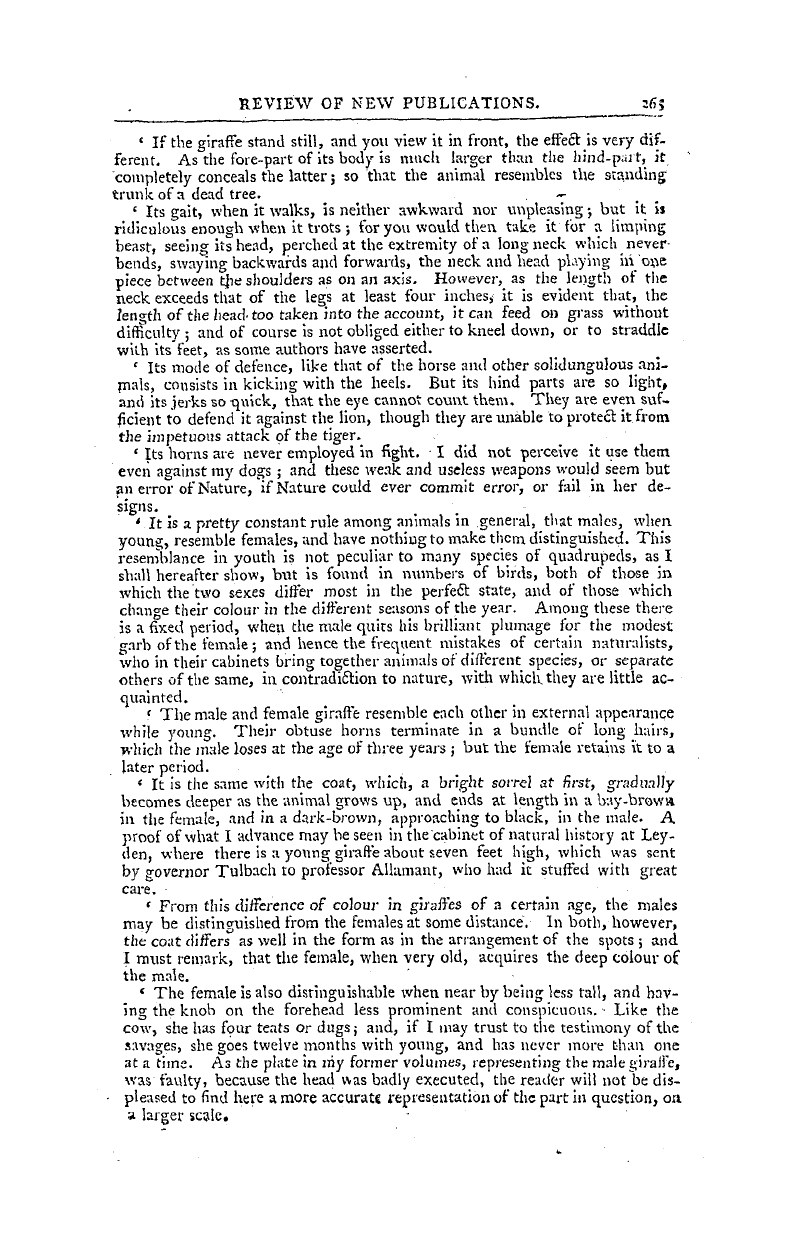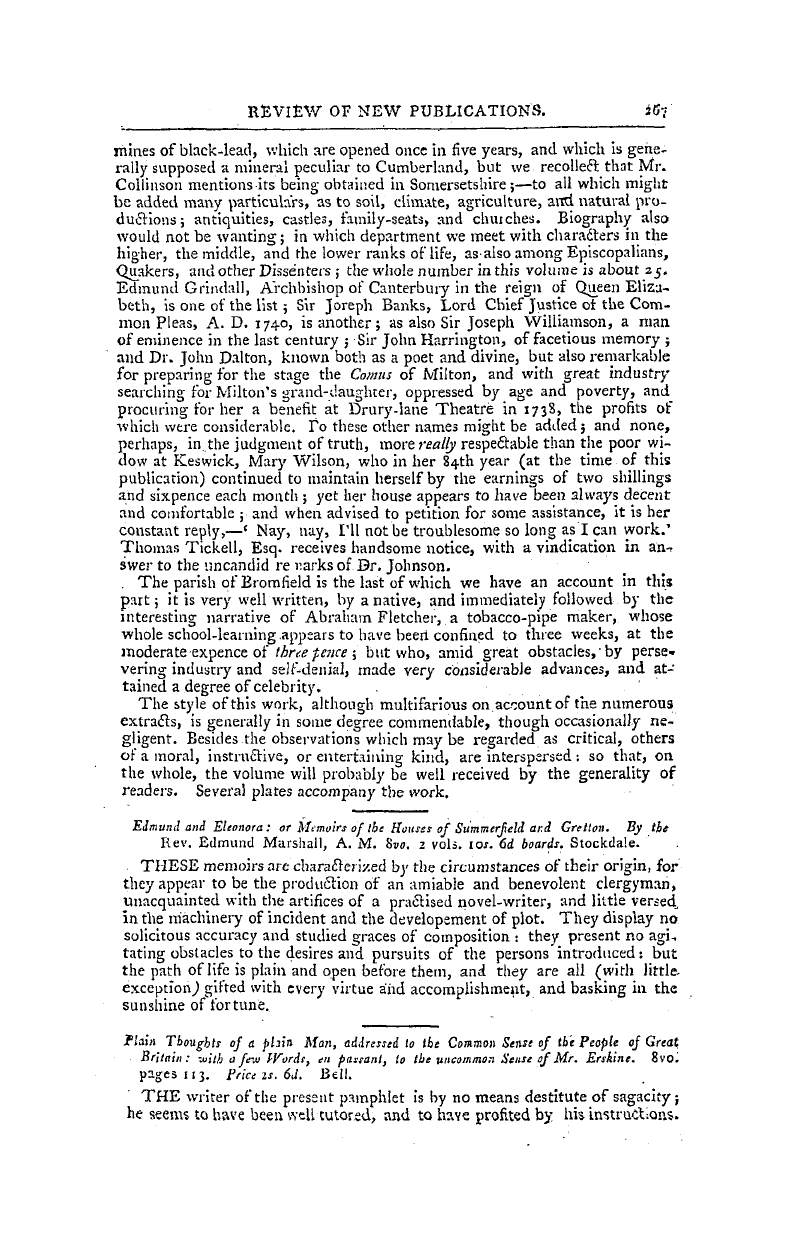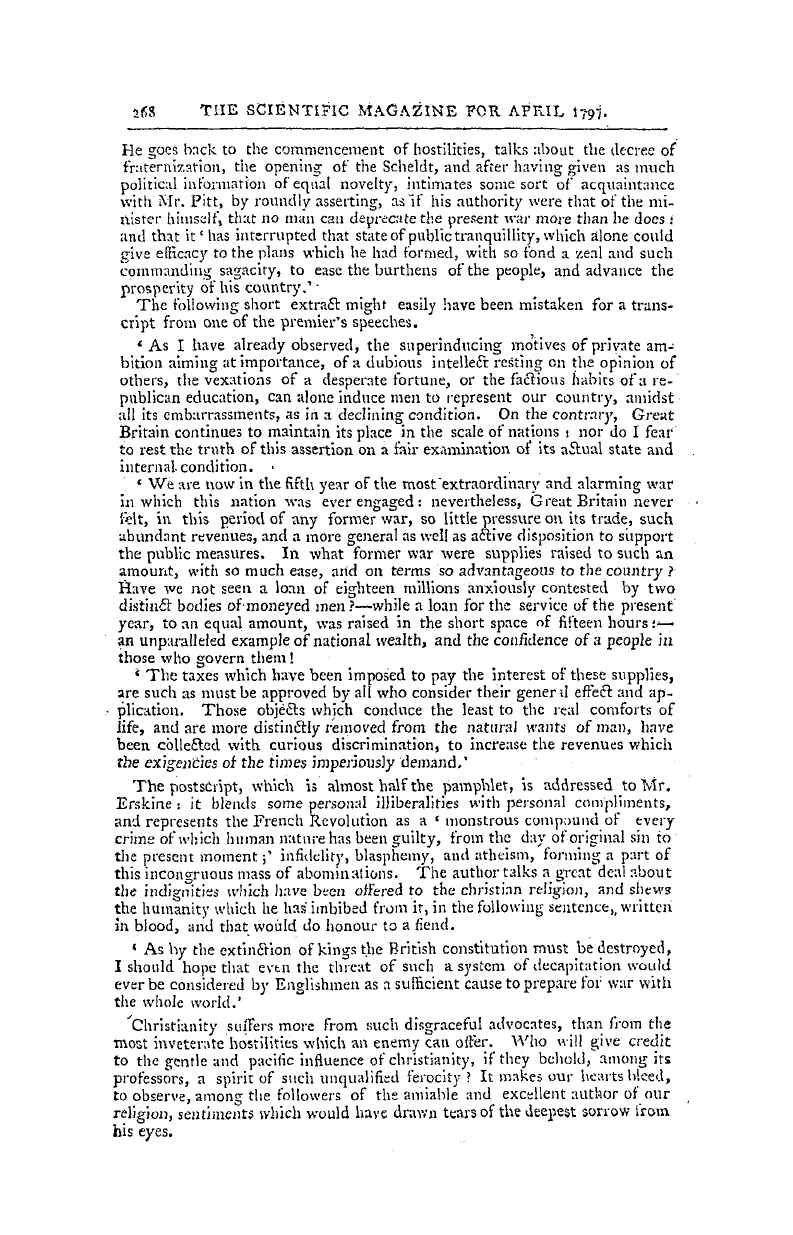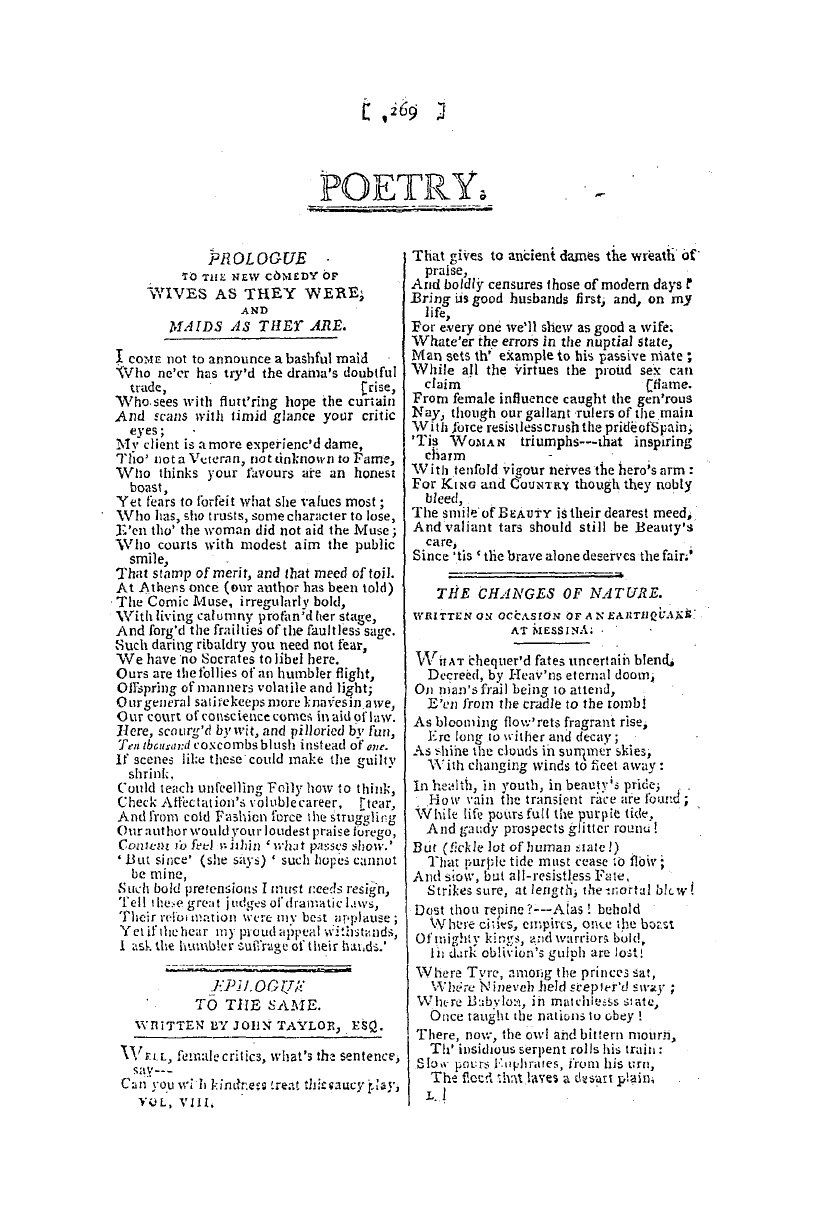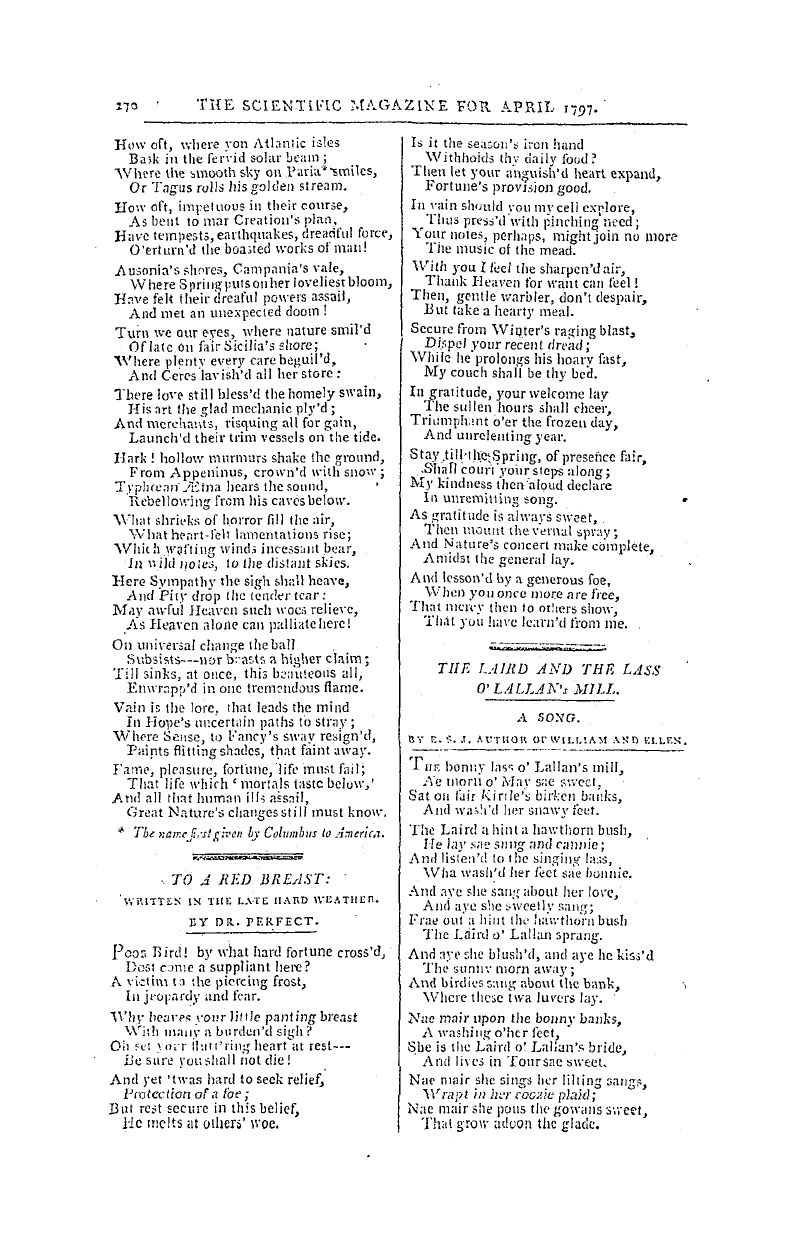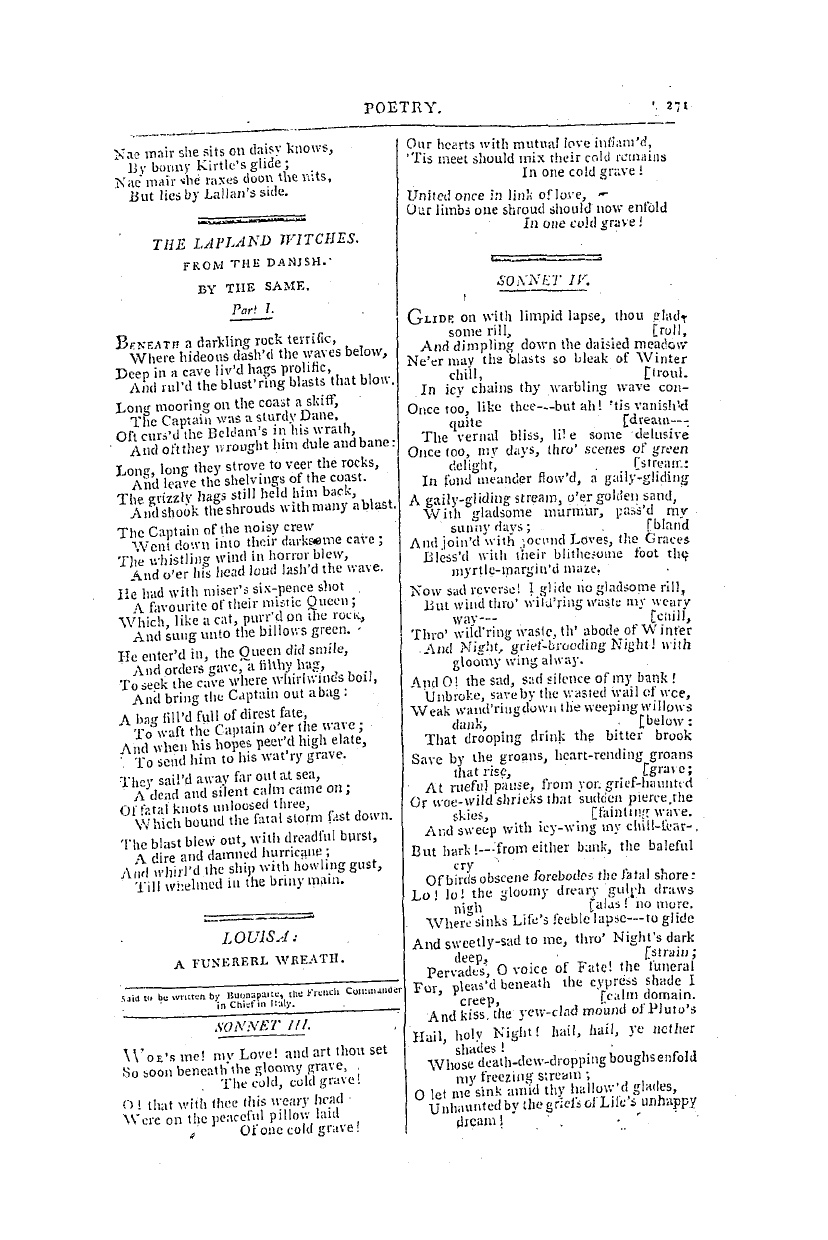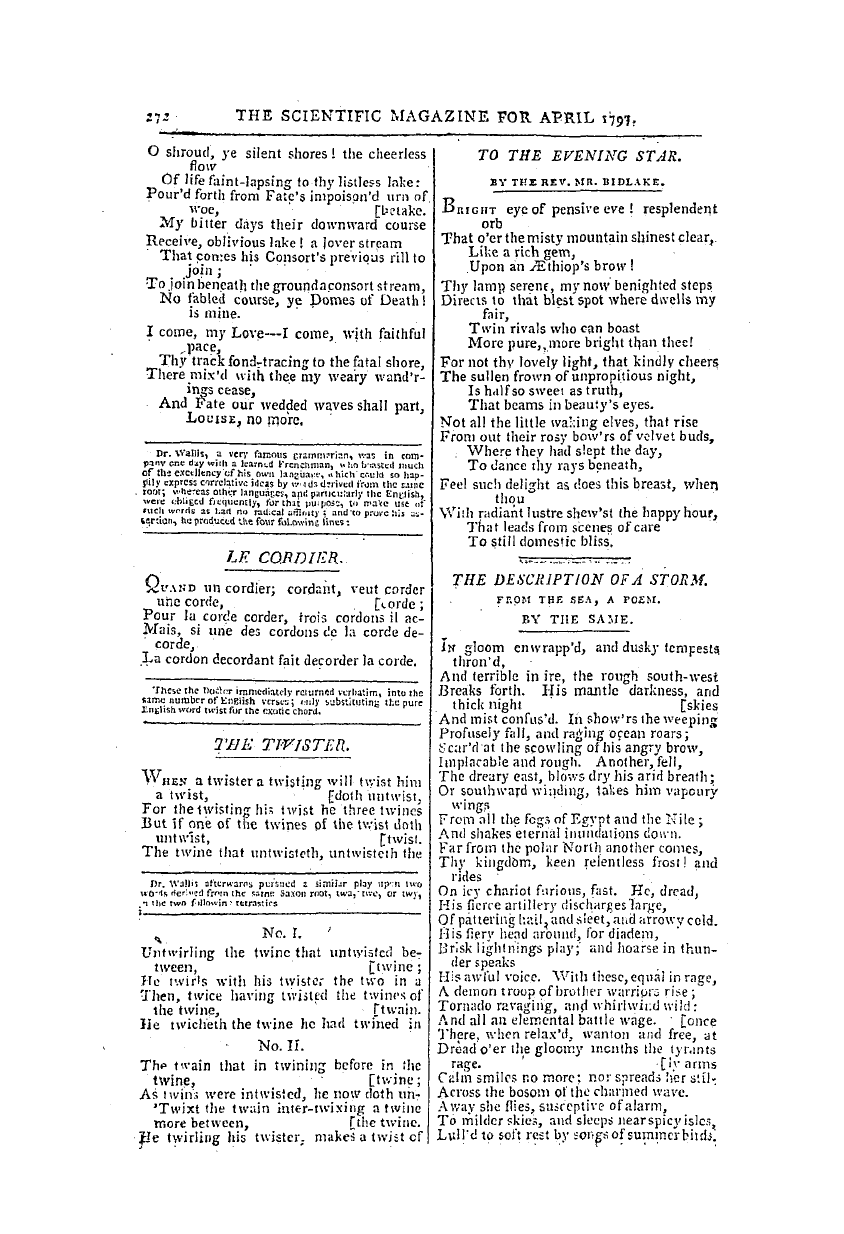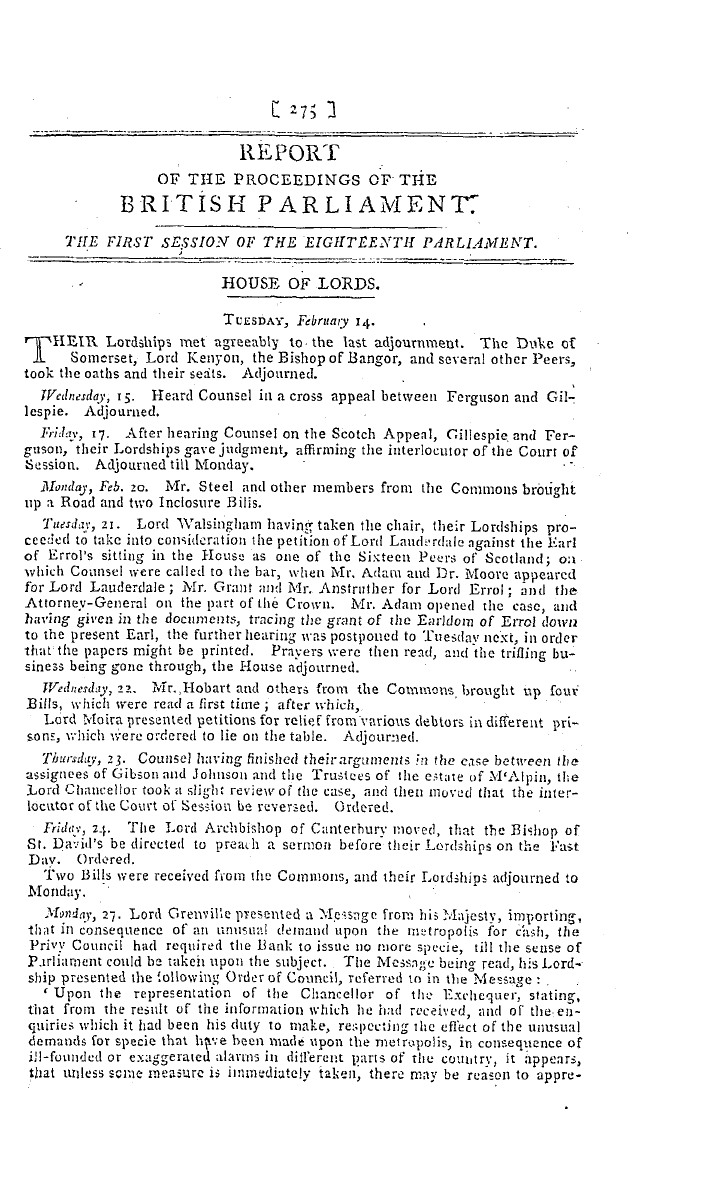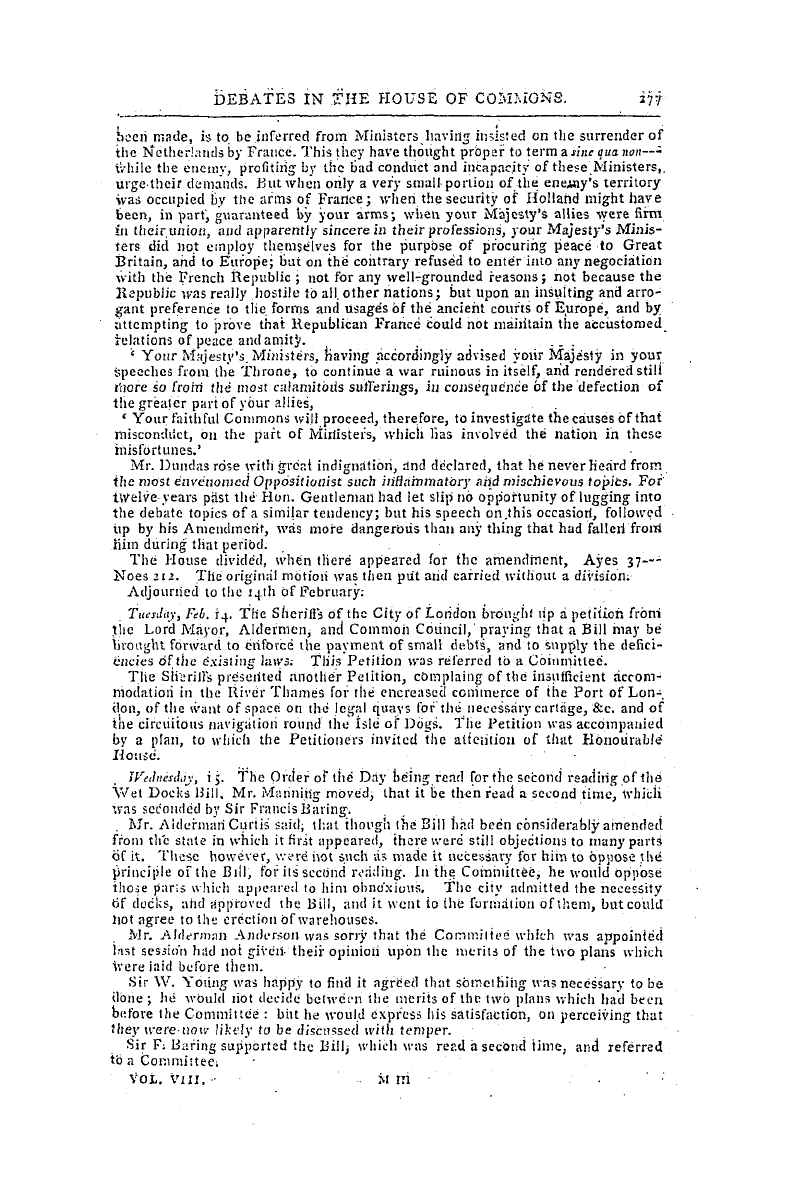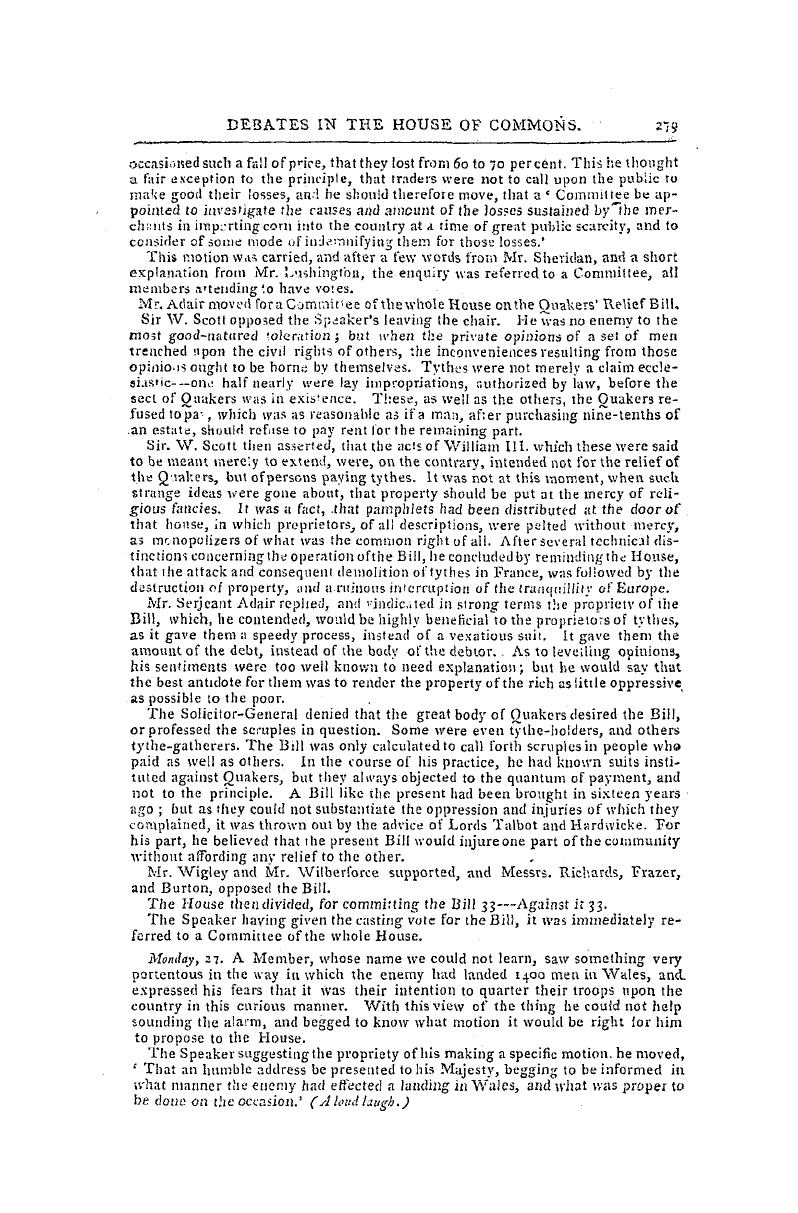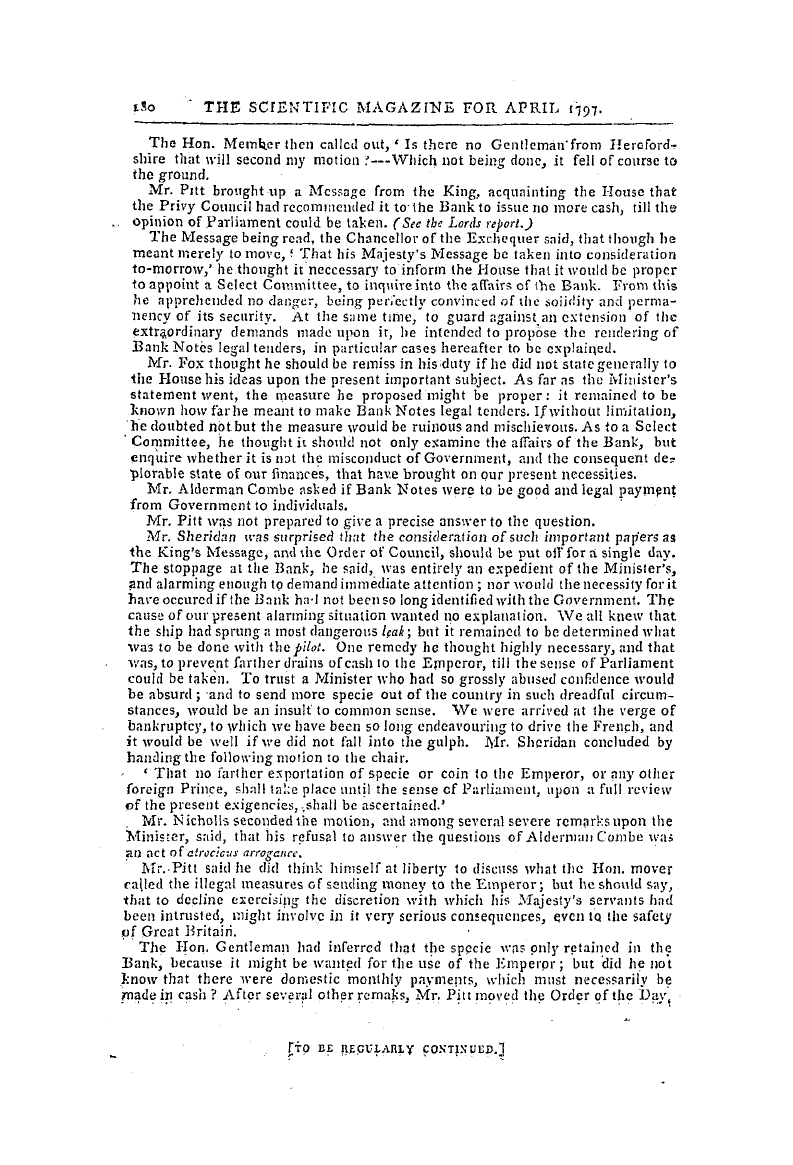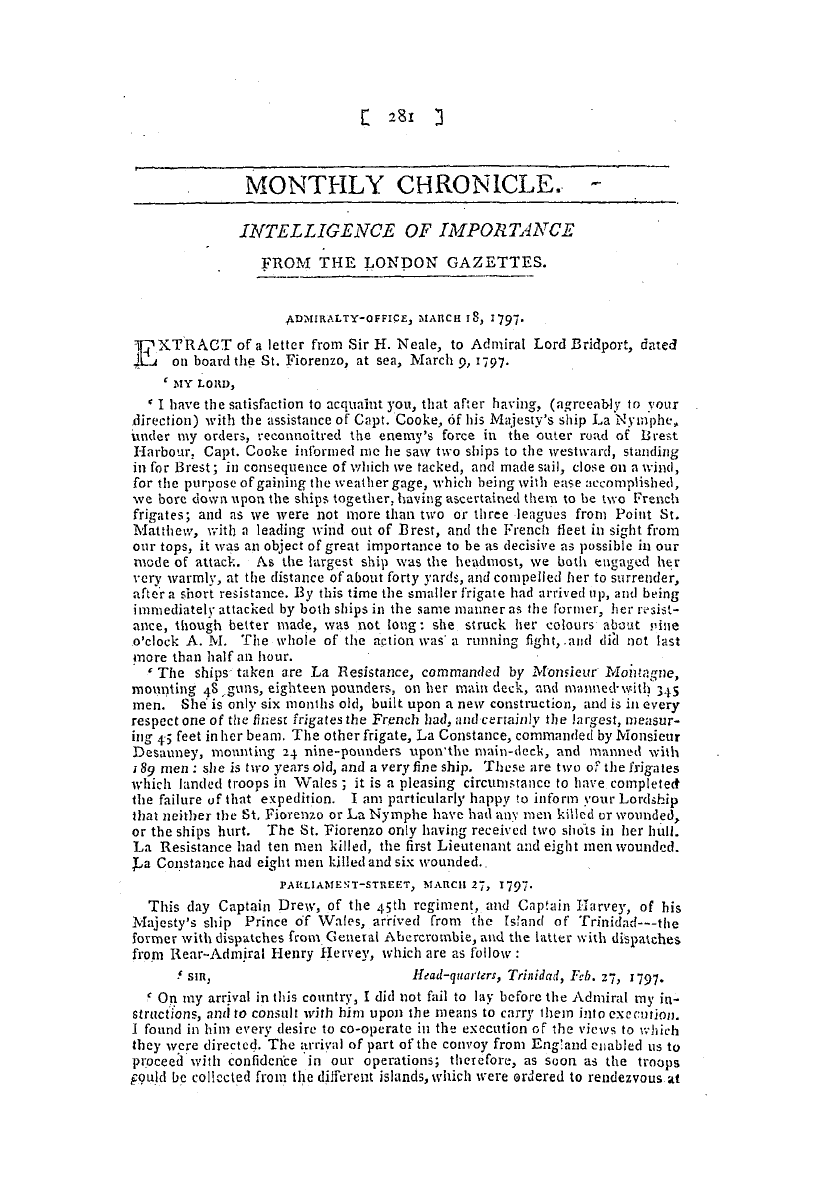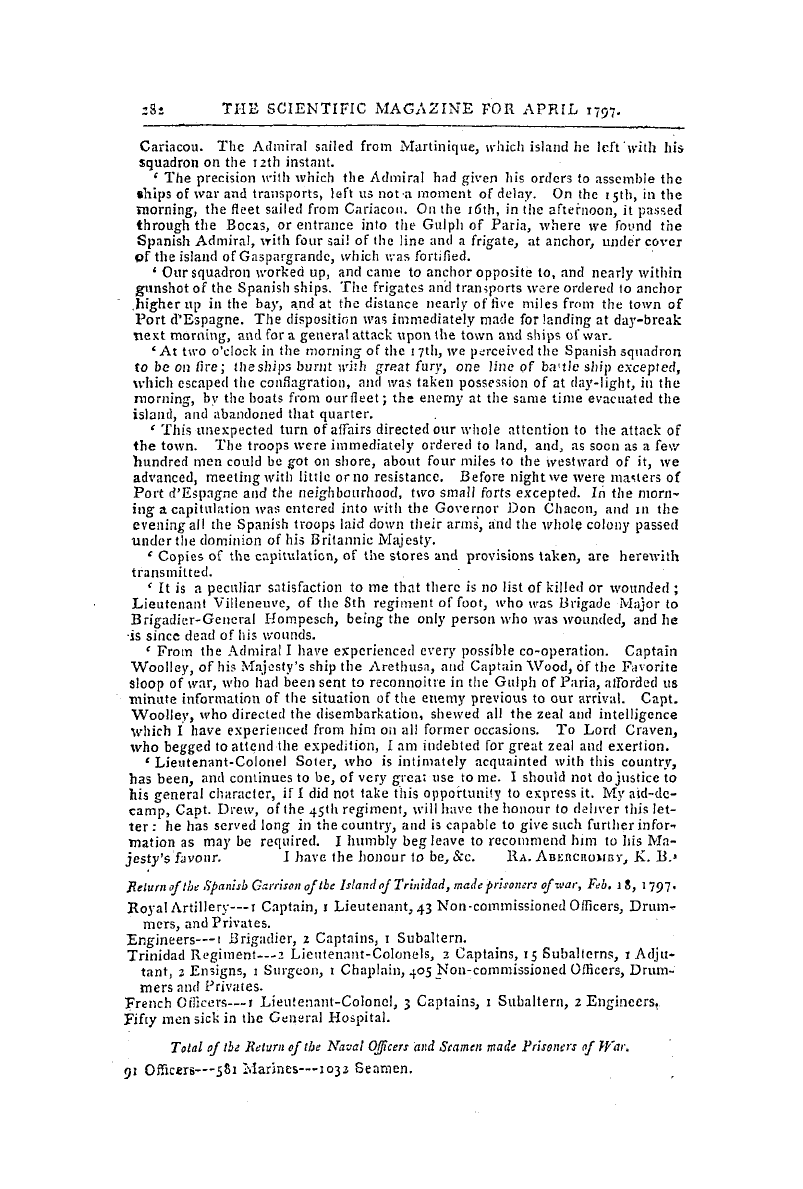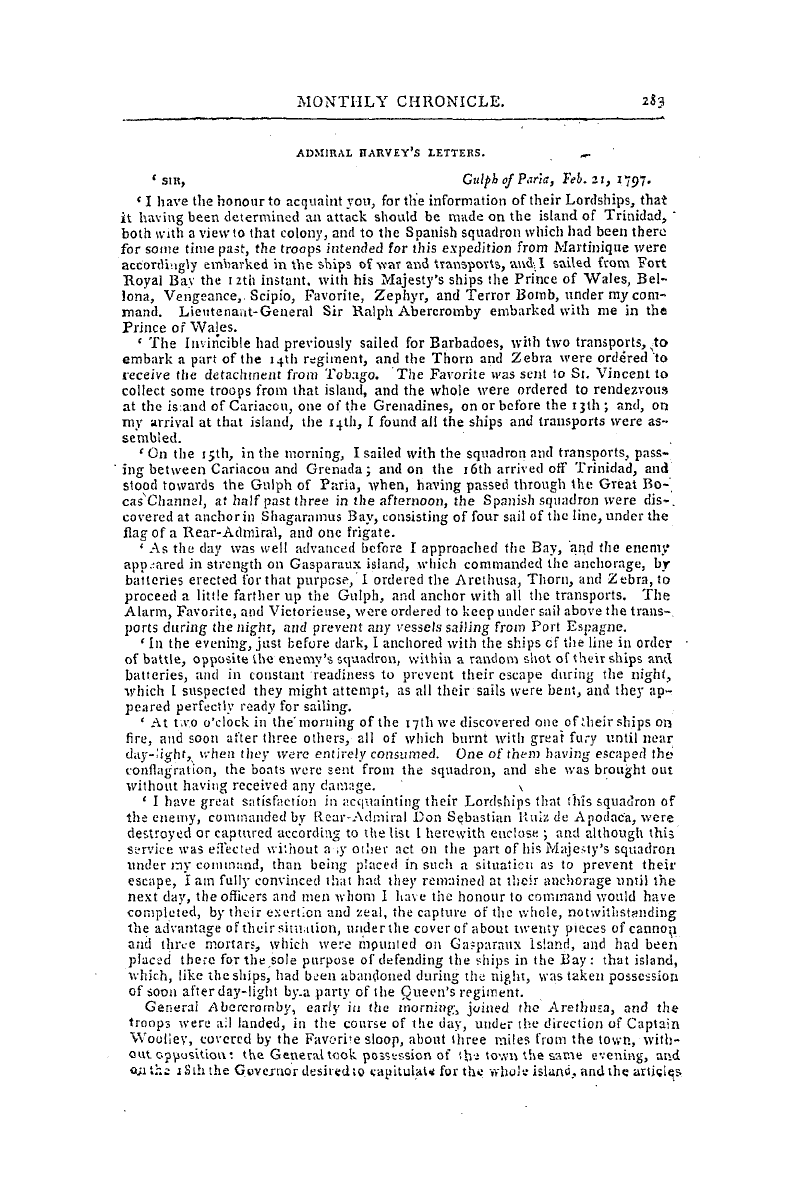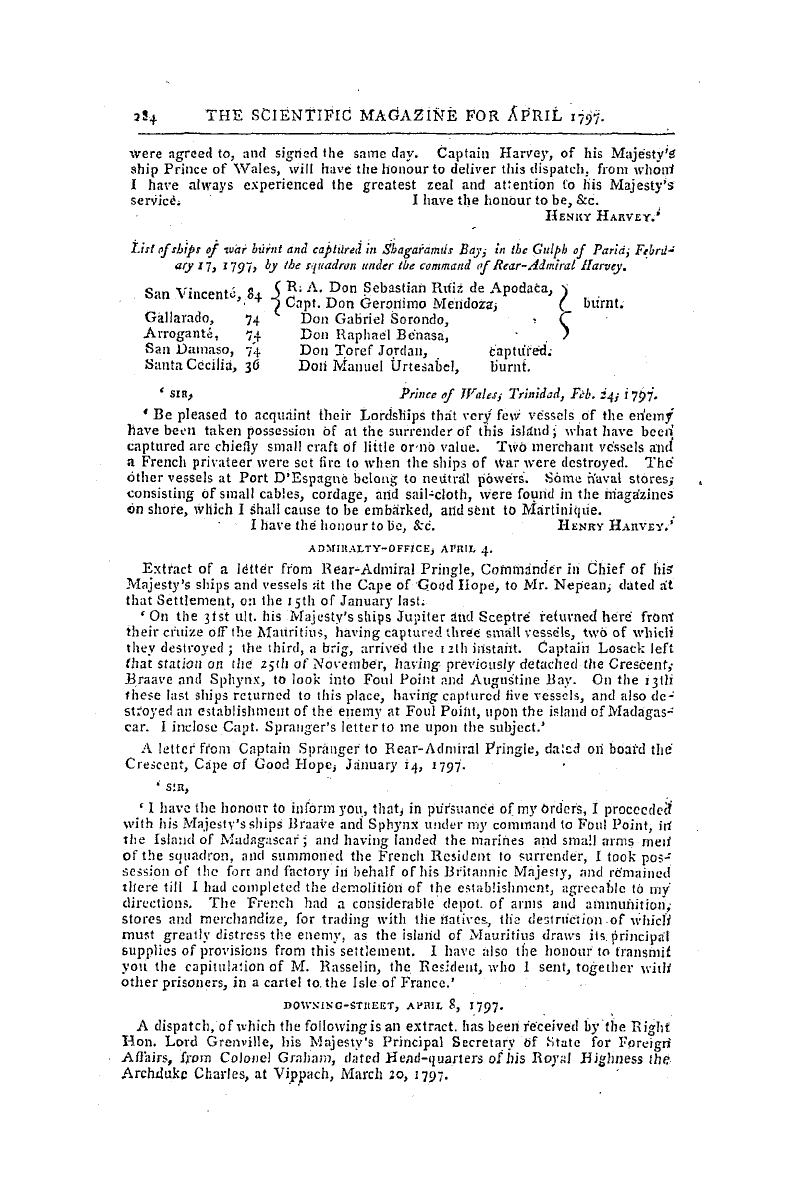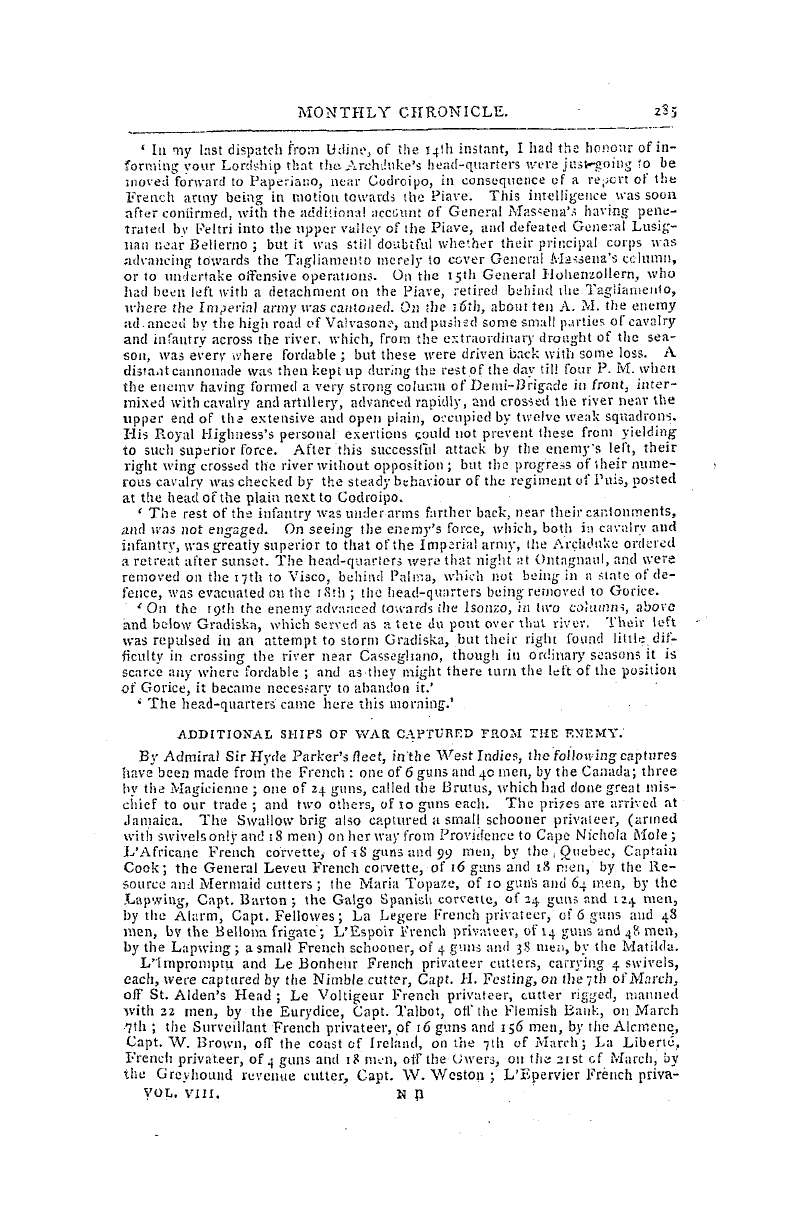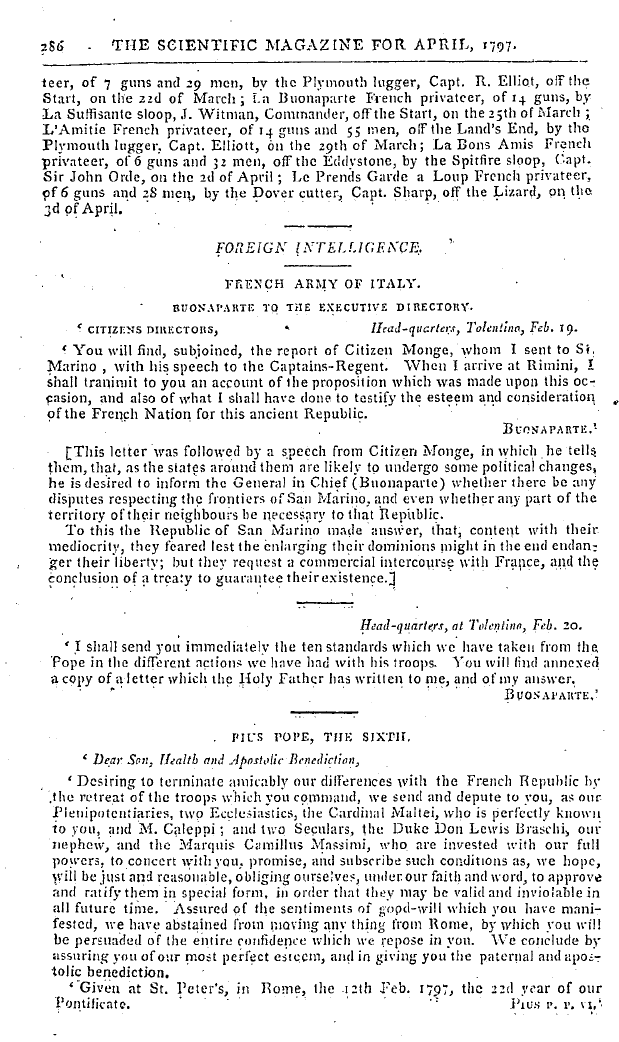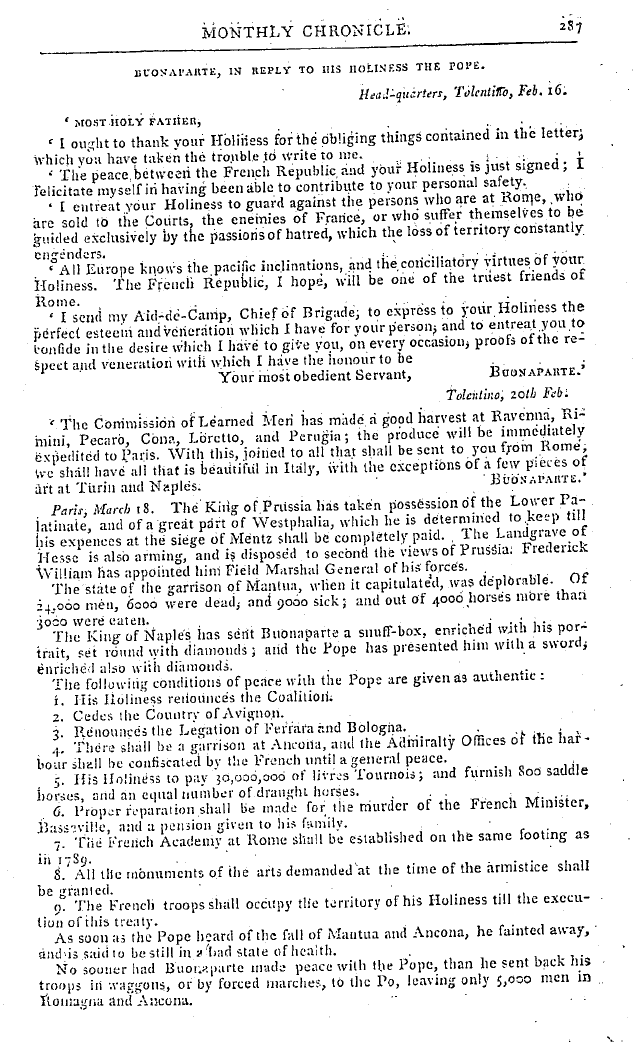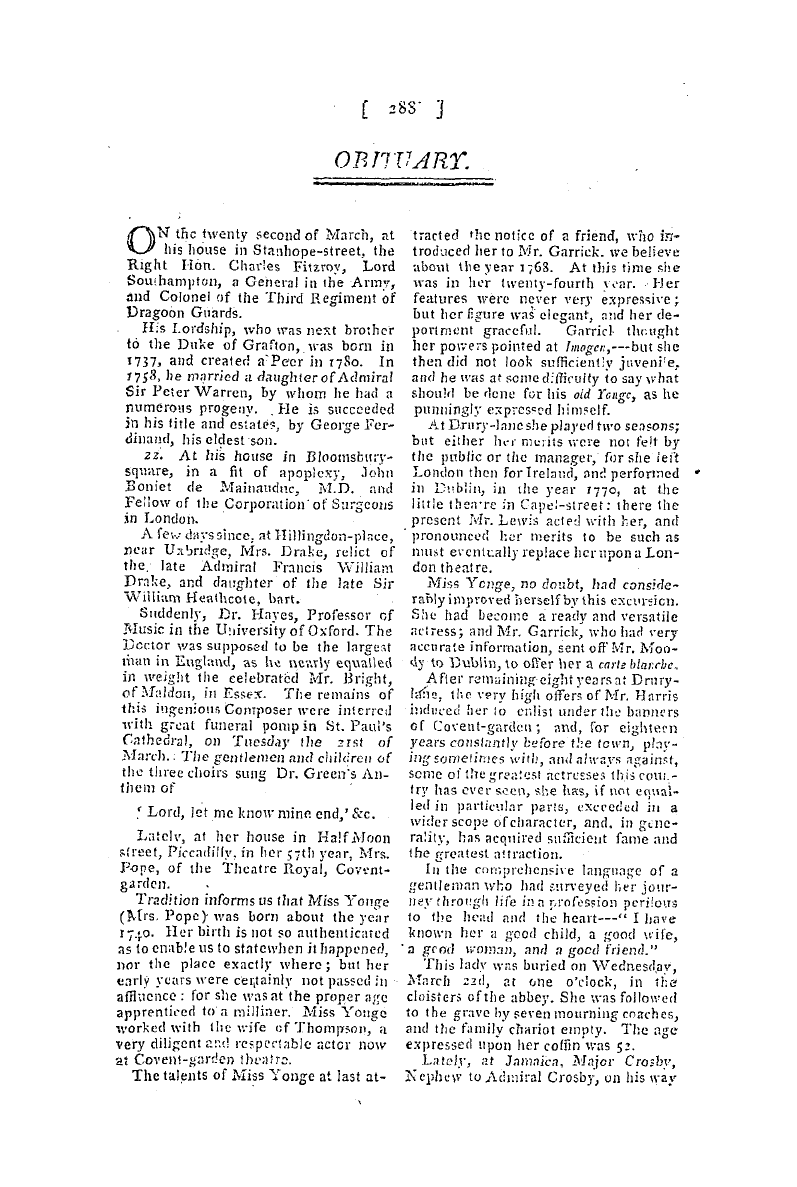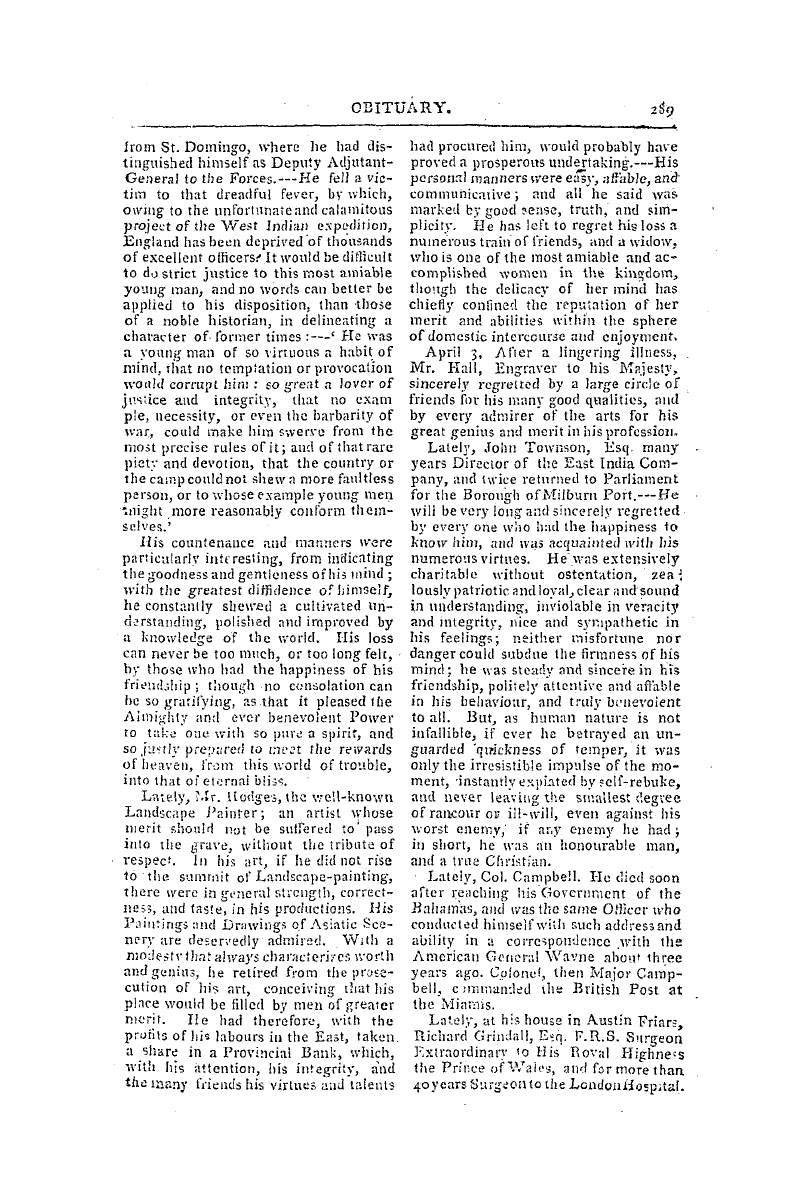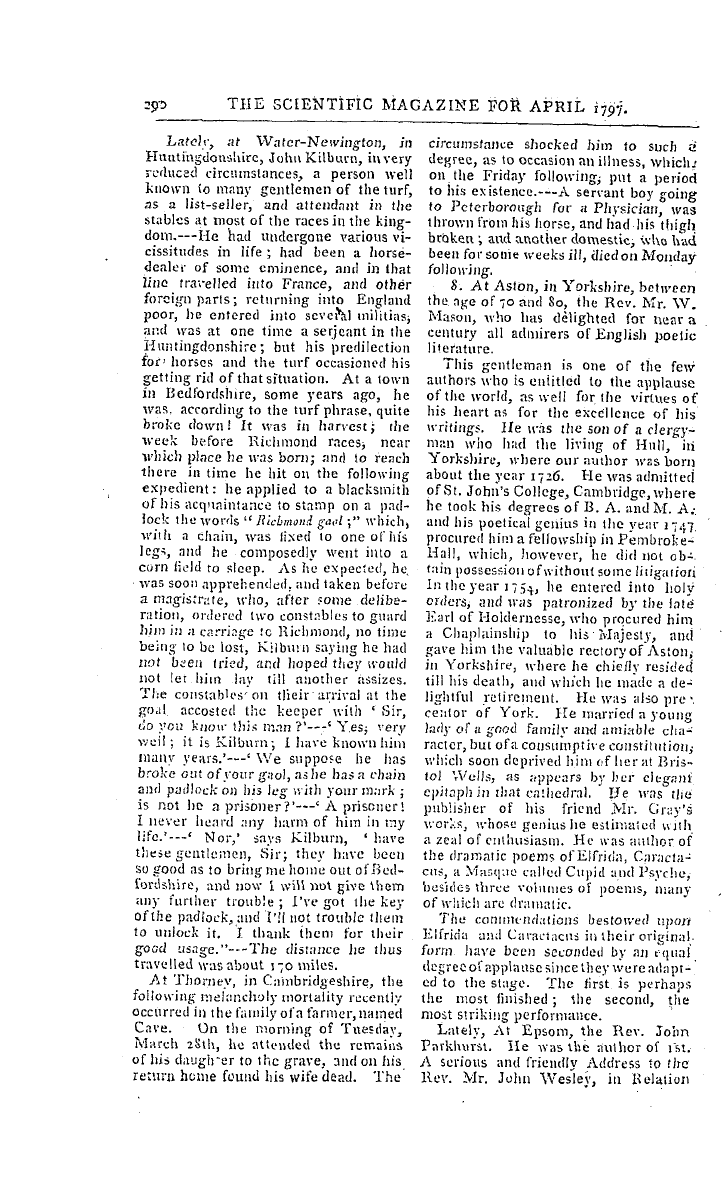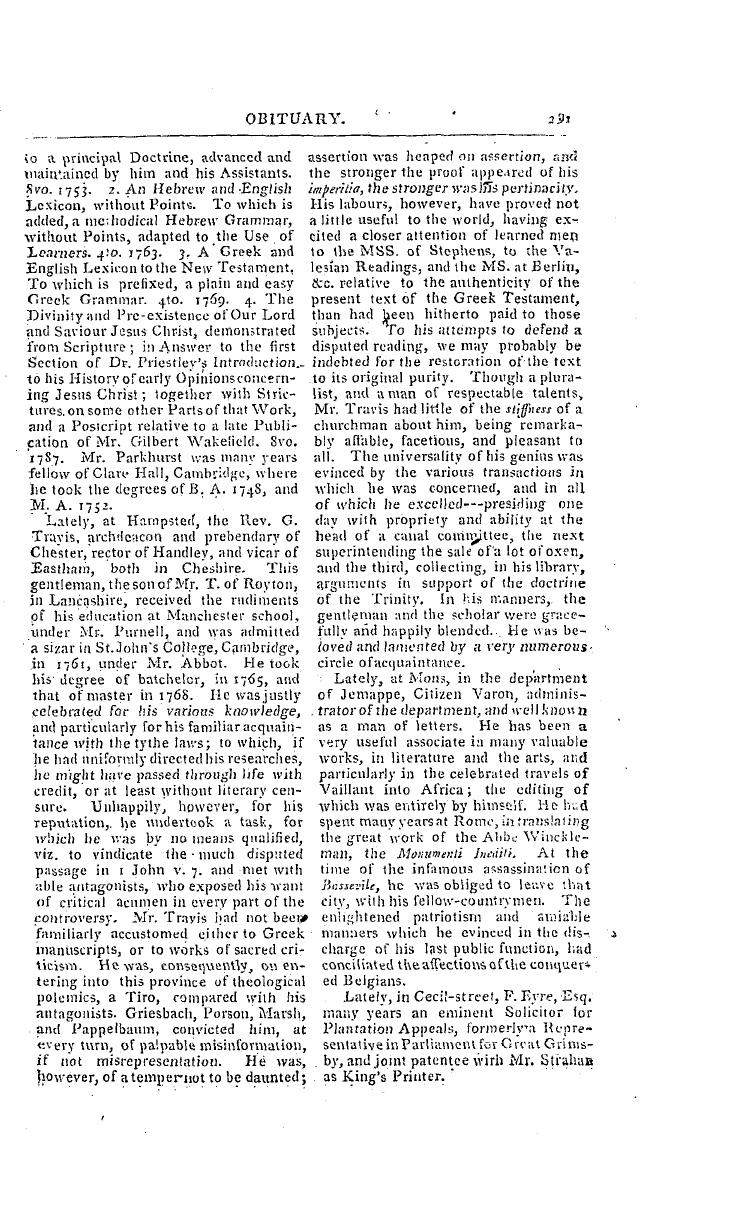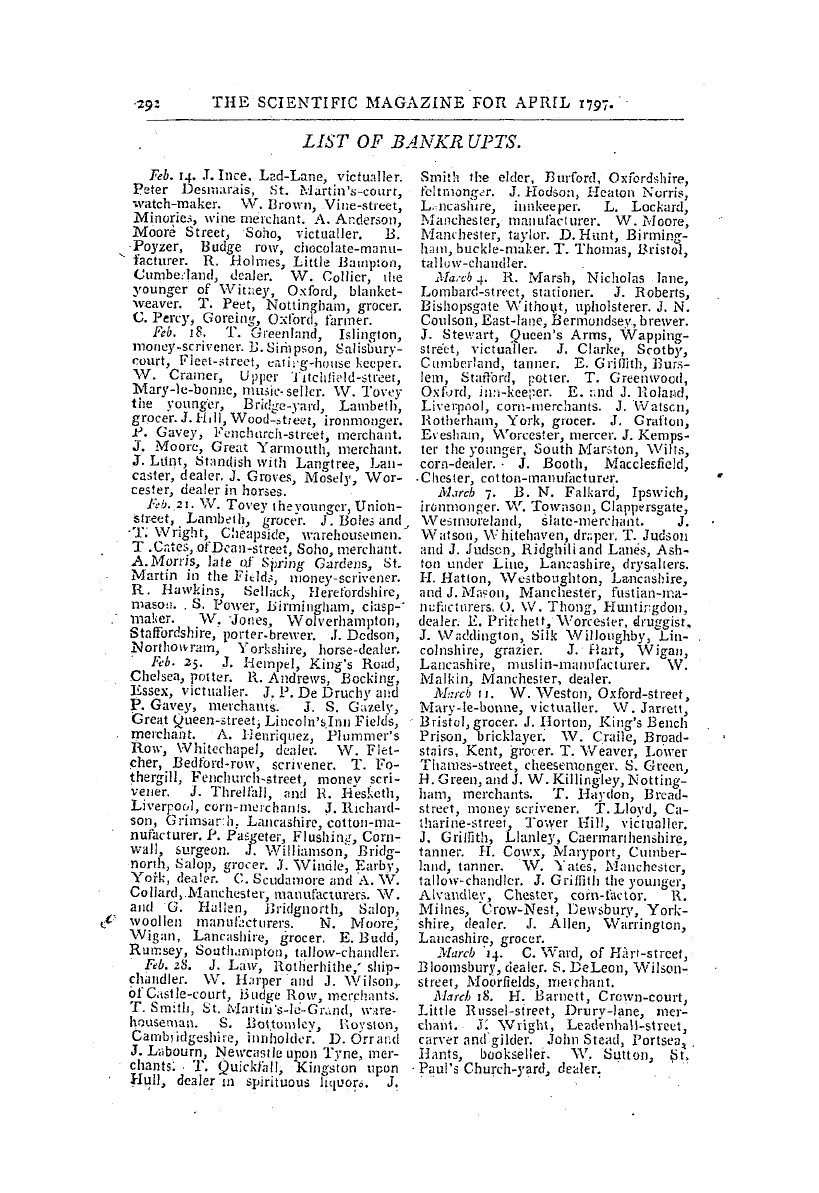Note: This text has been automatically extracted via Optical Character Recognition (OCR) software.
An Account Of The Death Of The Countess Cornelia Baudi, Of Cesena;
bit of bread , which was covered with ir , was refused by several dogs . In the room above the same soot flew about ; and , from the windows , trickled down a greasy , loathsome , yellowish liquor , with an unusual stink . The floor of the chamber was thick smeared with a gluish moisture , not easily got off , and the stink spread into other chambers . The narration is followed by an inquiry into the cause of this
conflagration : the result of which is , that it was not from the lamp , nor from a flash of lightening , bu : from her own body ; though some concluded that it must be the effect of a fuimen . ¦ The dogs refused the bread because of the sulphureous stink ; and nothing but a fuimen could reduce a bod y to impalpable ashes . But , it seems , there was no sulphureous or nitrous smell of fuhneu , ancl the effects of it
would not reduce a body to impalpable ashes . Our author thus maintains his opinion : ' The fire was caused in her entrails by enflarned effluvia of her blood , by juices and fermentations in the stomach , and many combustible matters abundant in living bodies , for the uses of life ; aud , lastlyby tho firey evaporations which exhale ' from the settling of "
, spirit of wine , brandies , & c . in the tunica velosa of the stomach , and other fat membranes , engendering there , as chemists observe , a kind of camphor ; which , in sleep , by a full breathing ancl respiration , are put into a stronger motion , and , consequentl y , more apt to be set on fire .
' That the fat is an oily liquid , separated from tlie blood by tire glands of the membrana adiposa , and of an easy combustible nature , common experience shews . Also our blood , lymph , and bile , when dried b y - art , flame like spirit of wine at the approach of the least fire , and burn into ashes . ' Observ . 171 . in the Ephemeris of Germany , anno 10 . Such a drying up maybe caused in our body , by drinking rectified
brandy , and strong wines , if mixed with camphor ; as Monsieur Litre observes , in the dissection of a woman forty-five years old , in the history of the Royal Academy of Sciences , 1706 , p . 23 . Besides , although the salts in living ancl vegetable creatures are not likely inclined to kindle , they often contribute to it , when joined by a strong fermentation . Thus the mixture of two liquorsalthough
, cold to the touch , produced a flaming fire . Becker was the first discoverer of this marvellous phenomenon , by ' mixing vitriol with that of turpentine . Boirichius afterwards did the same , by mixing oil of turpentine with aquafortis ; and , at Isst , Monsieur Tournefurt , by joining spirits of nitre with oil of sassafras ; and Monsieur Horn berg with this acid spirit , together with the oil and
quintessences of ail the aromatic Indian herbs : nay , Mr . Bomberg asserts , that with a certain cold water cannons were fired , anno 1710 . See the above said history of the Academy of Sciences , p . 66 . By fermentation , magazines of gun-powder , sea coal , woollen cloths , oil-cloths , barns , paper-mills , and hay-cocks , have been set on lire . There is further to be considered the vast quantity of effluvia which
Note: This text has been automatically extracted via Optical Character Recognition (OCR) software.
An Account Of The Death Of The Countess Cornelia Baudi, Of Cesena;
bit of bread , which was covered with ir , was refused by several dogs . In the room above the same soot flew about ; and , from the windows , trickled down a greasy , loathsome , yellowish liquor , with an unusual stink . The floor of the chamber was thick smeared with a gluish moisture , not easily got off , and the stink spread into other chambers . The narration is followed by an inquiry into the cause of this
conflagration : the result of which is , that it was not from the lamp , nor from a flash of lightening , bu : from her own body ; though some concluded that it must be the effect of a fuimen . ¦ The dogs refused the bread because of the sulphureous stink ; and nothing but a fuimen could reduce a bod y to impalpable ashes . But , it seems , there was no sulphureous or nitrous smell of fuhneu , ancl the effects of it
would not reduce a body to impalpable ashes . Our author thus maintains his opinion : ' The fire was caused in her entrails by enflarned effluvia of her blood , by juices and fermentations in the stomach , and many combustible matters abundant in living bodies , for the uses of life ; aud , lastlyby tho firey evaporations which exhale ' from the settling of "
, spirit of wine , brandies , & c . in the tunica velosa of the stomach , and other fat membranes , engendering there , as chemists observe , a kind of camphor ; which , in sleep , by a full breathing ancl respiration , are put into a stronger motion , and , consequentl y , more apt to be set on fire .
' That the fat is an oily liquid , separated from tlie blood by tire glands of the membrana adiposa , and of an easy combustible nature , common experience shews . Also our blood , lymph , and bile , when dried b y - art , flame like spirit of wine at the approach of the least fire , and burn into ashes . ' Observ . 171 . in the Ephemeris of Germany , anno 10 . Such a drying up maybe caused in our body , by drinking rectified
brandy , and strong wines , if mixed with camphor ; as Monsieur Litre observes , in the dissection of a woman forty-five years old , in the history of the Royal Academy of Sciences , 1706 , p . 23 . Besides , although the salts in living ancl vegetable creatures are not likely inclined to kindle , they often contribute to it , when joined by a strong fermentation . Thus the mixture of two liquorsalthough
, cold to the touch , produced a flaming fire . Becker was the first discoverer of this marvellous phenomenon , by ' mixing vitriol with that of turpentine . Boirichius afterwards did the same , by mixing oil of turpentine with aquafortis ; and , at Isst , Monsieur Tournefurt , by joining spirits of nitre with oil of sassafras ; and Monsieur Horn berg with this acid spirit , together with the oil and
quintessences of ail the aromatic Indian herbs : nay , Mr . Bomberg asserts , that with a certain cold water cannons were fired , anno 1710 . See the above said history of the Academy of Sciences , p . 66 . By fermentation , magazines of gun-powder , sea coal , woollen cloths , oil-cloths , barns , paper-mills , and hay-cocks , have been set on lire . There is further to be considered the vast quantity of effluvia which

